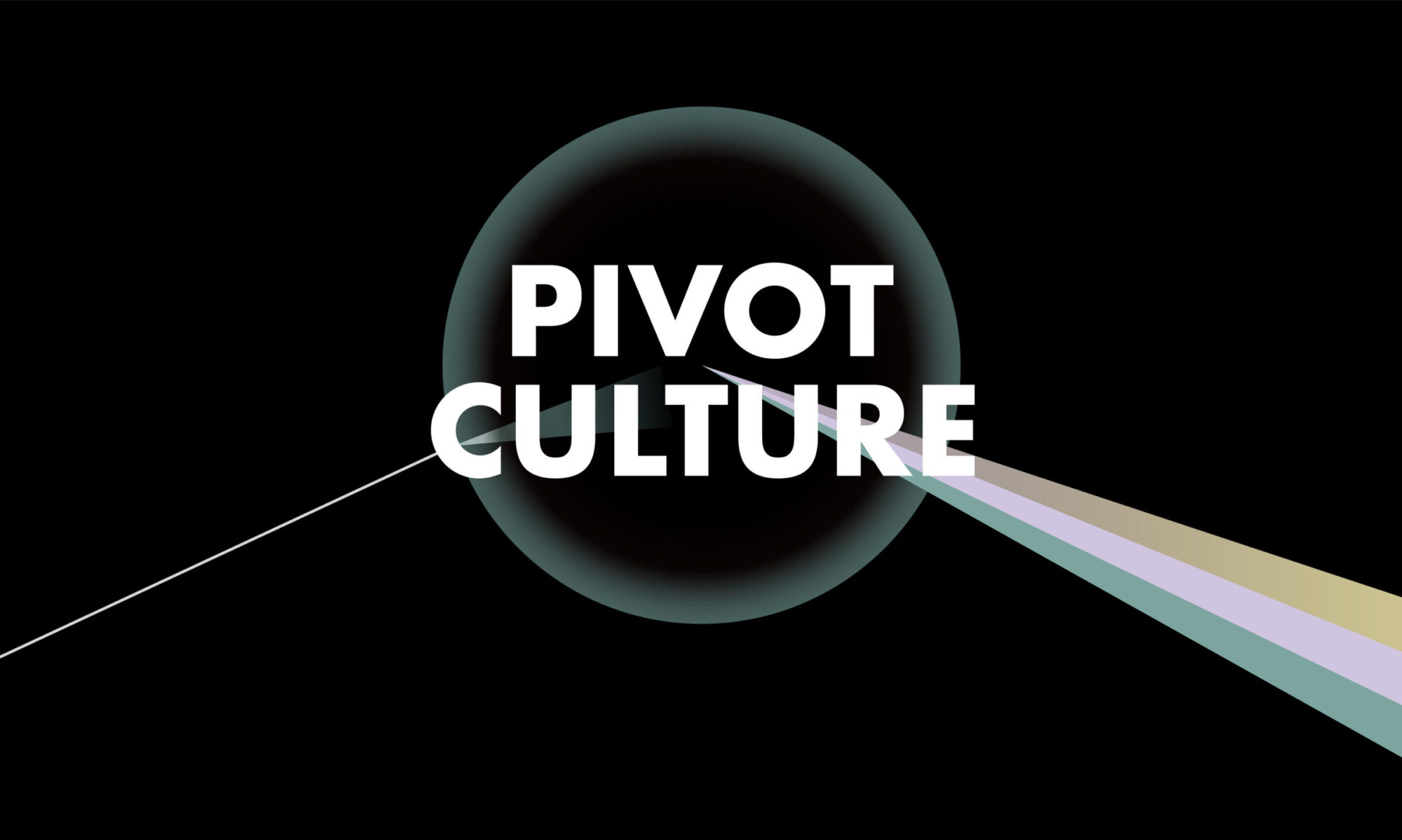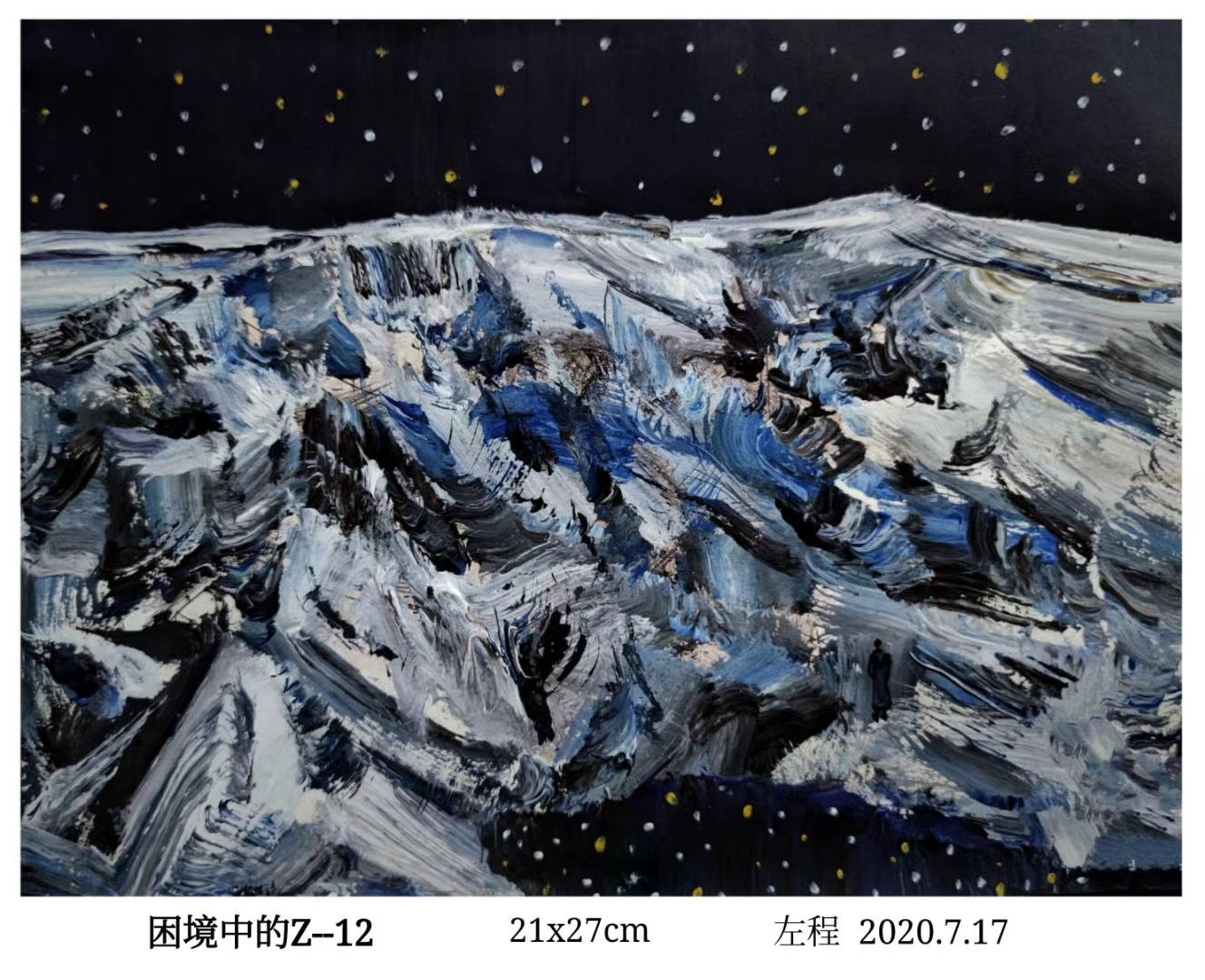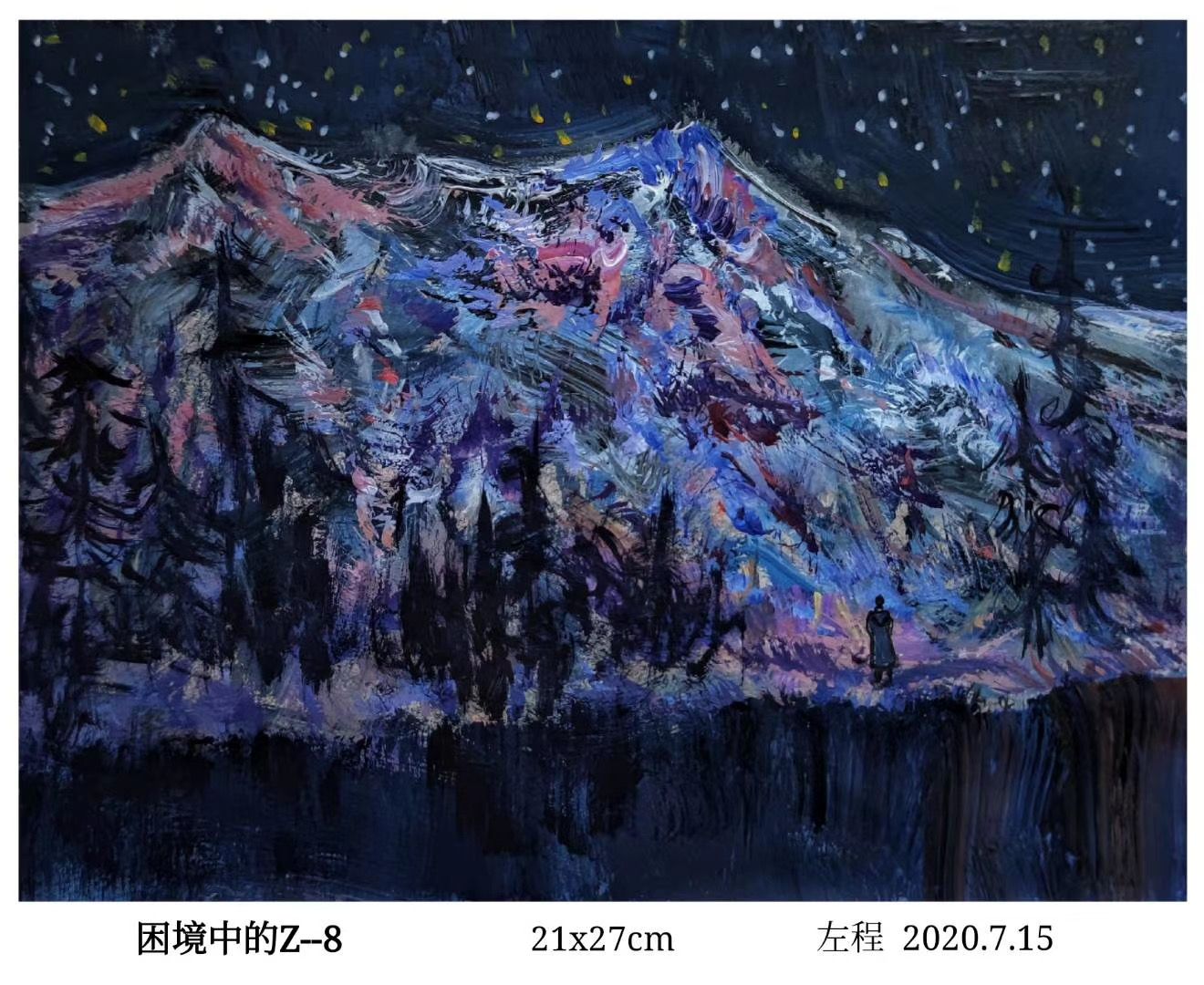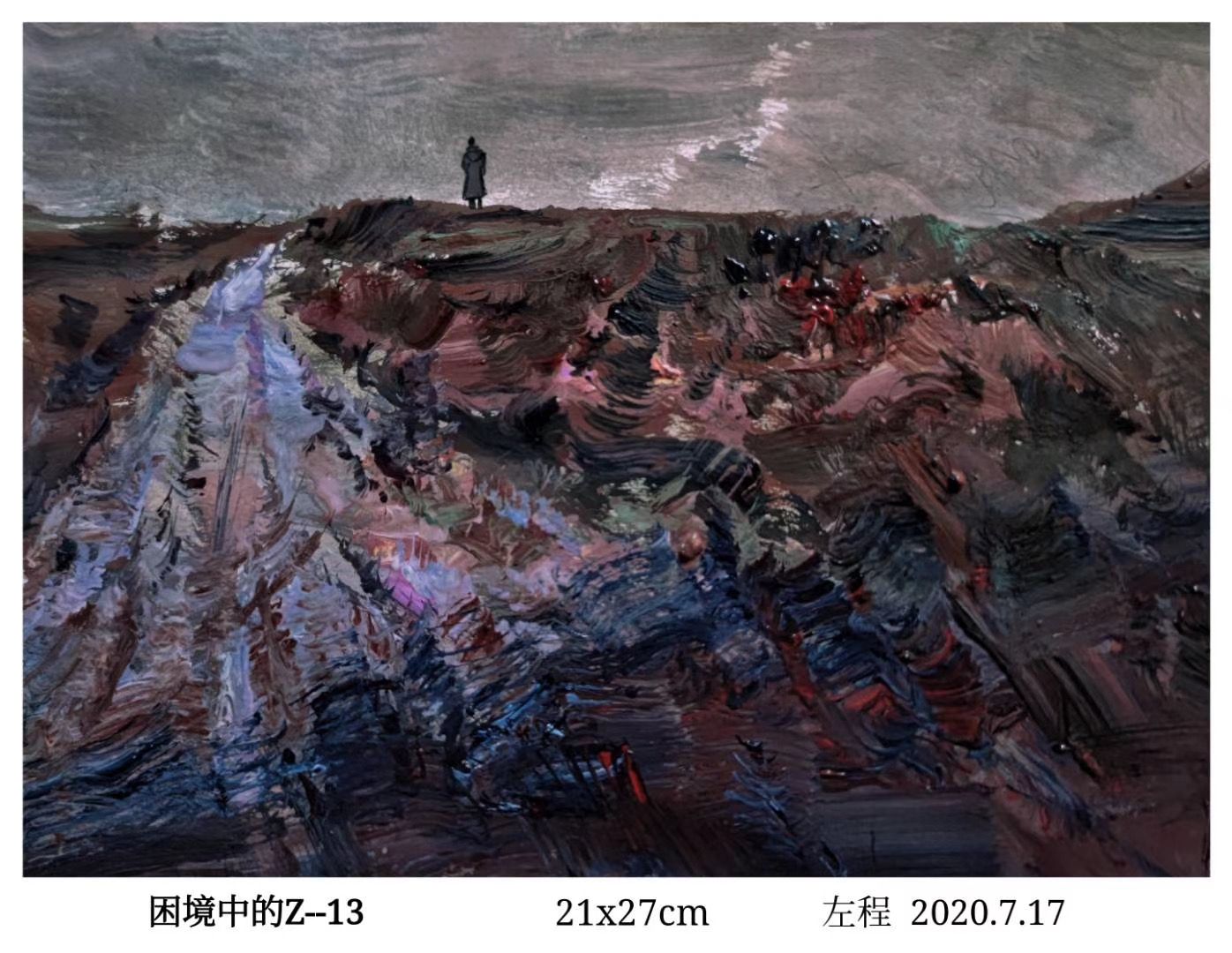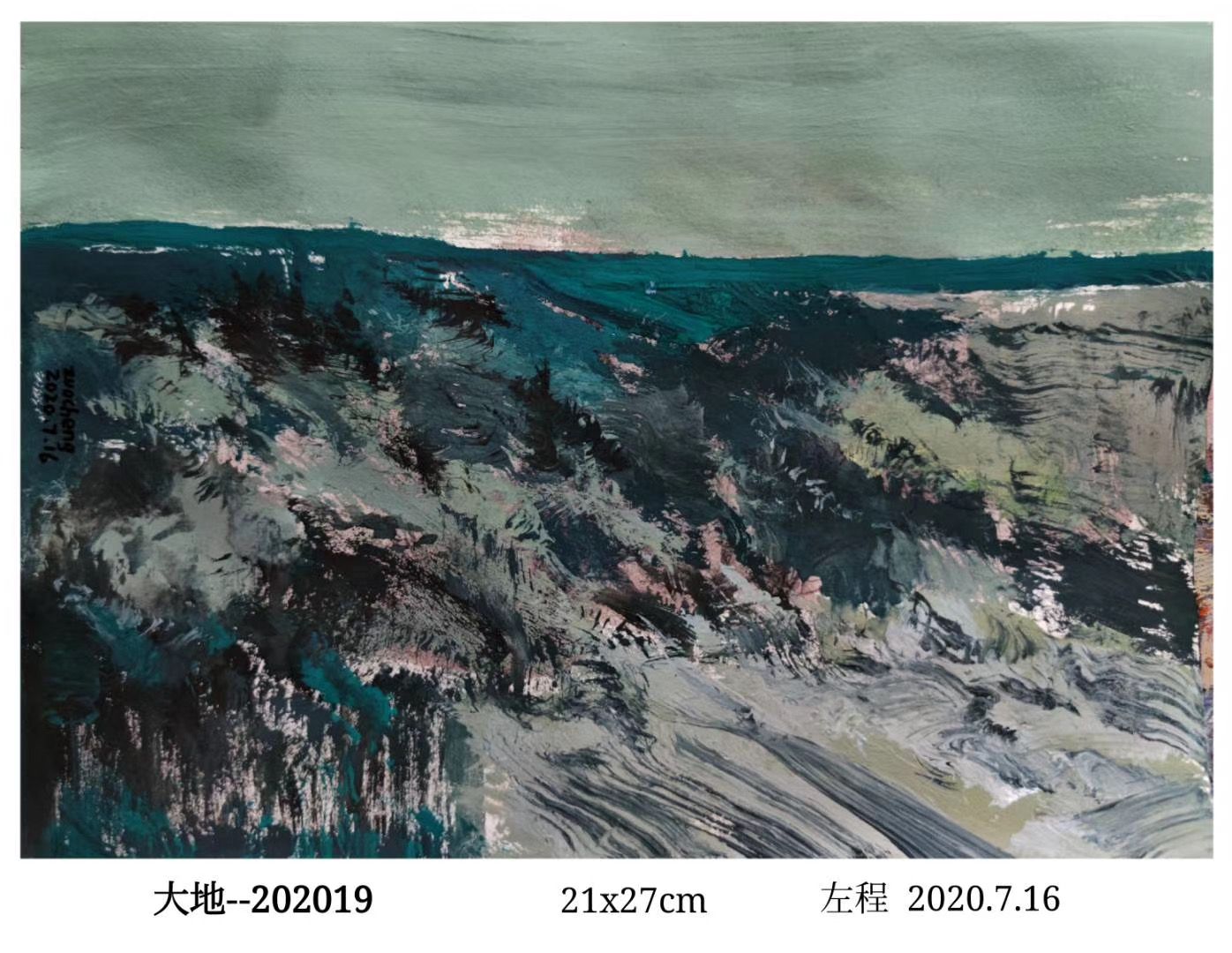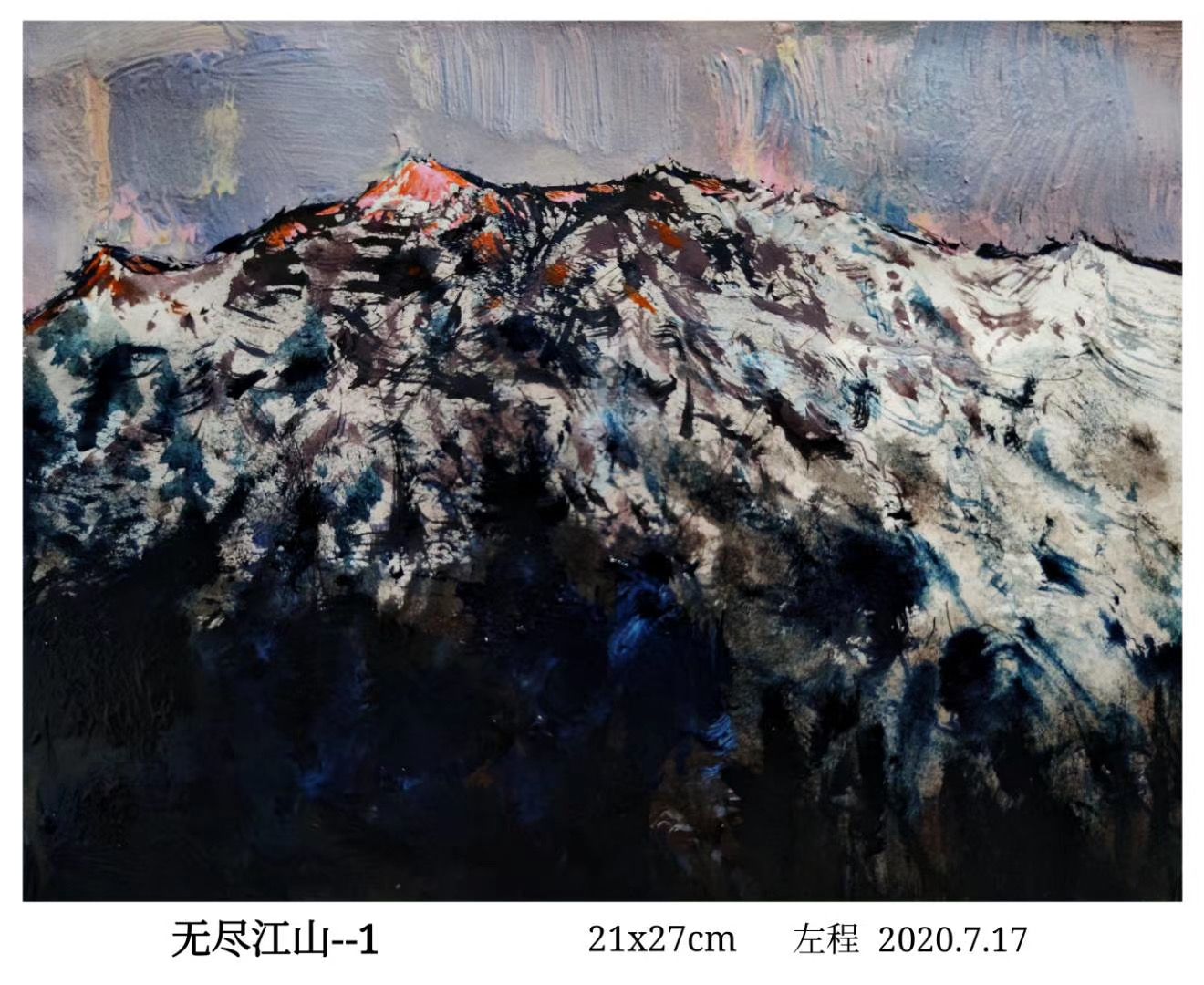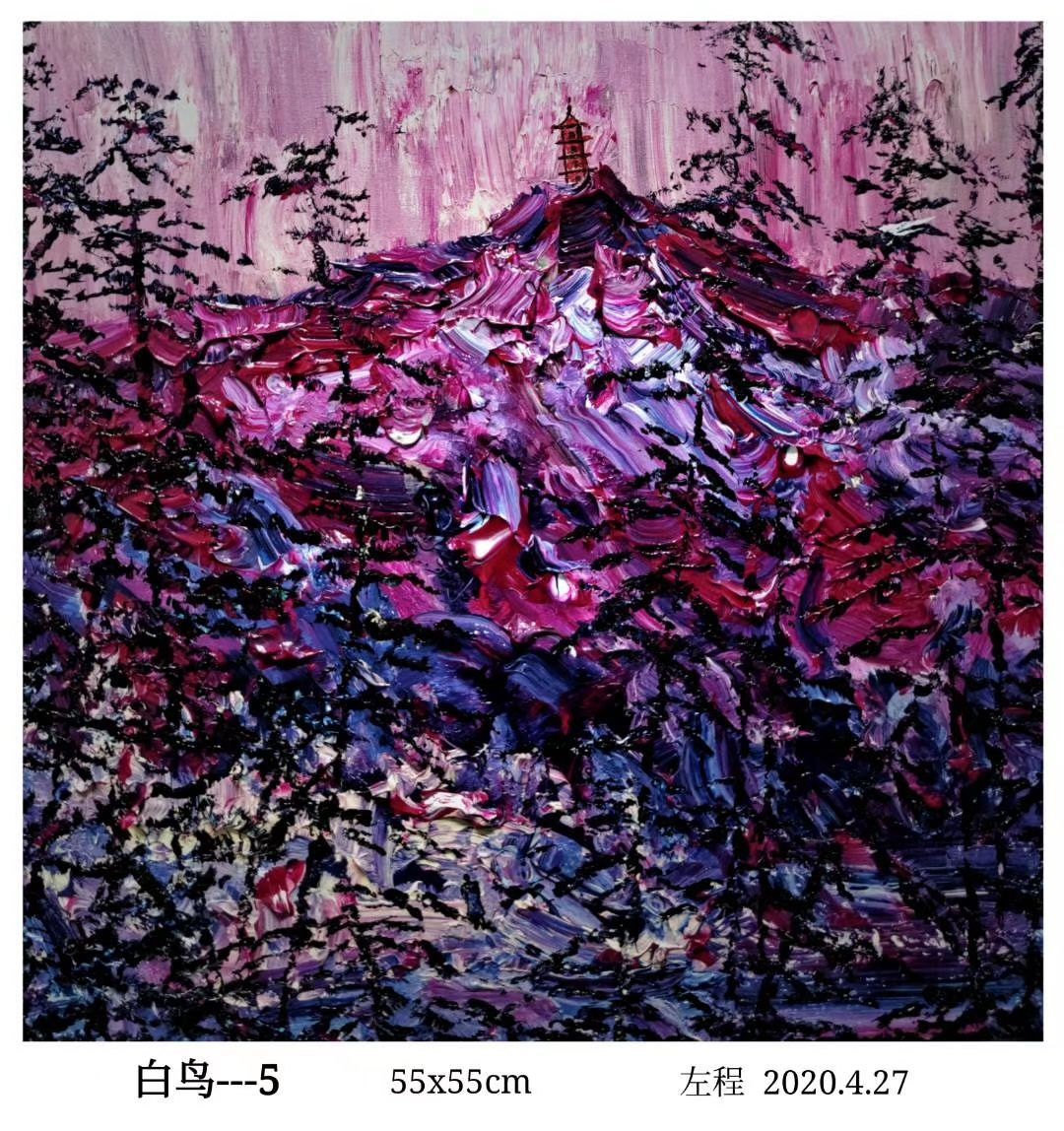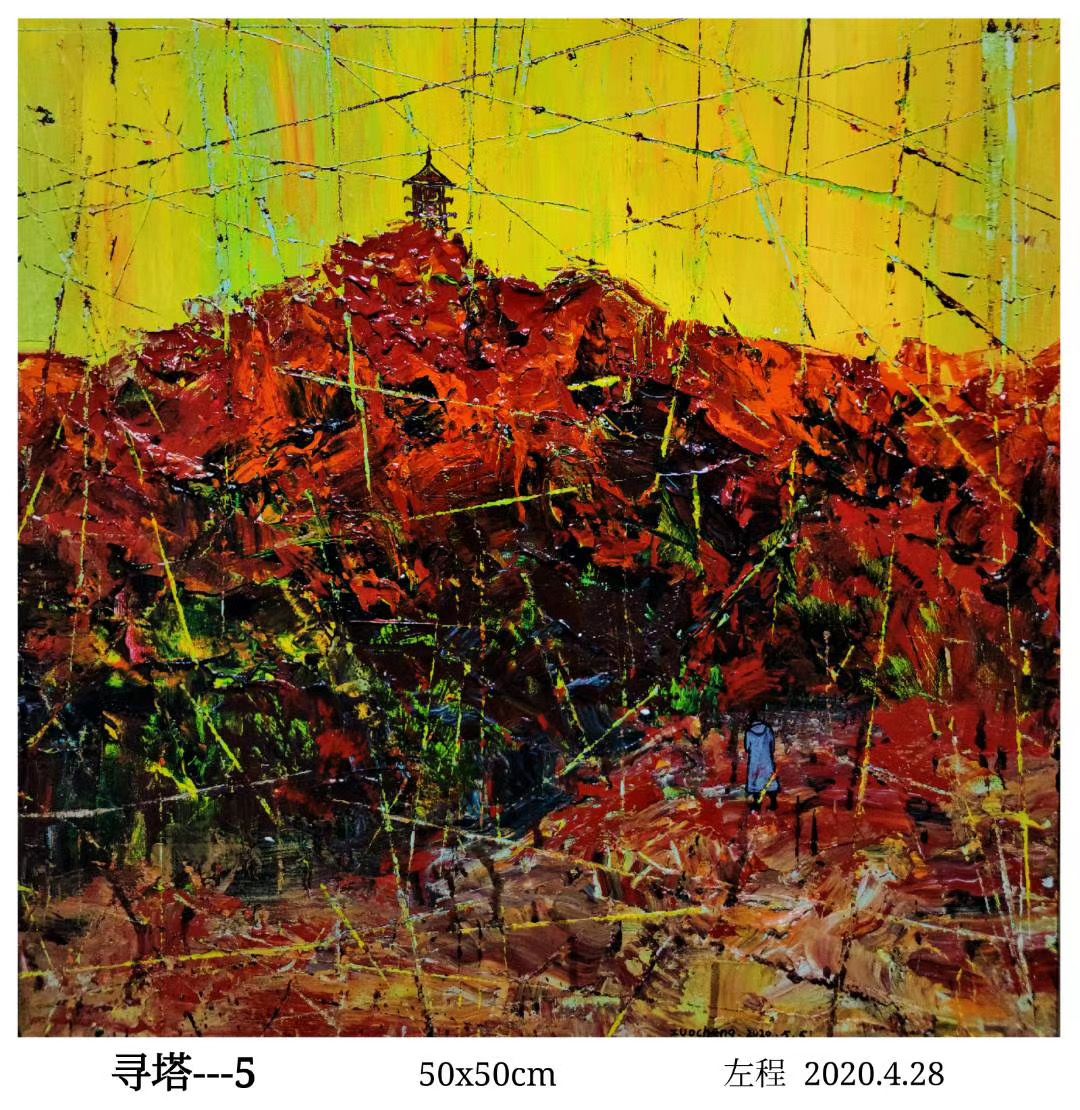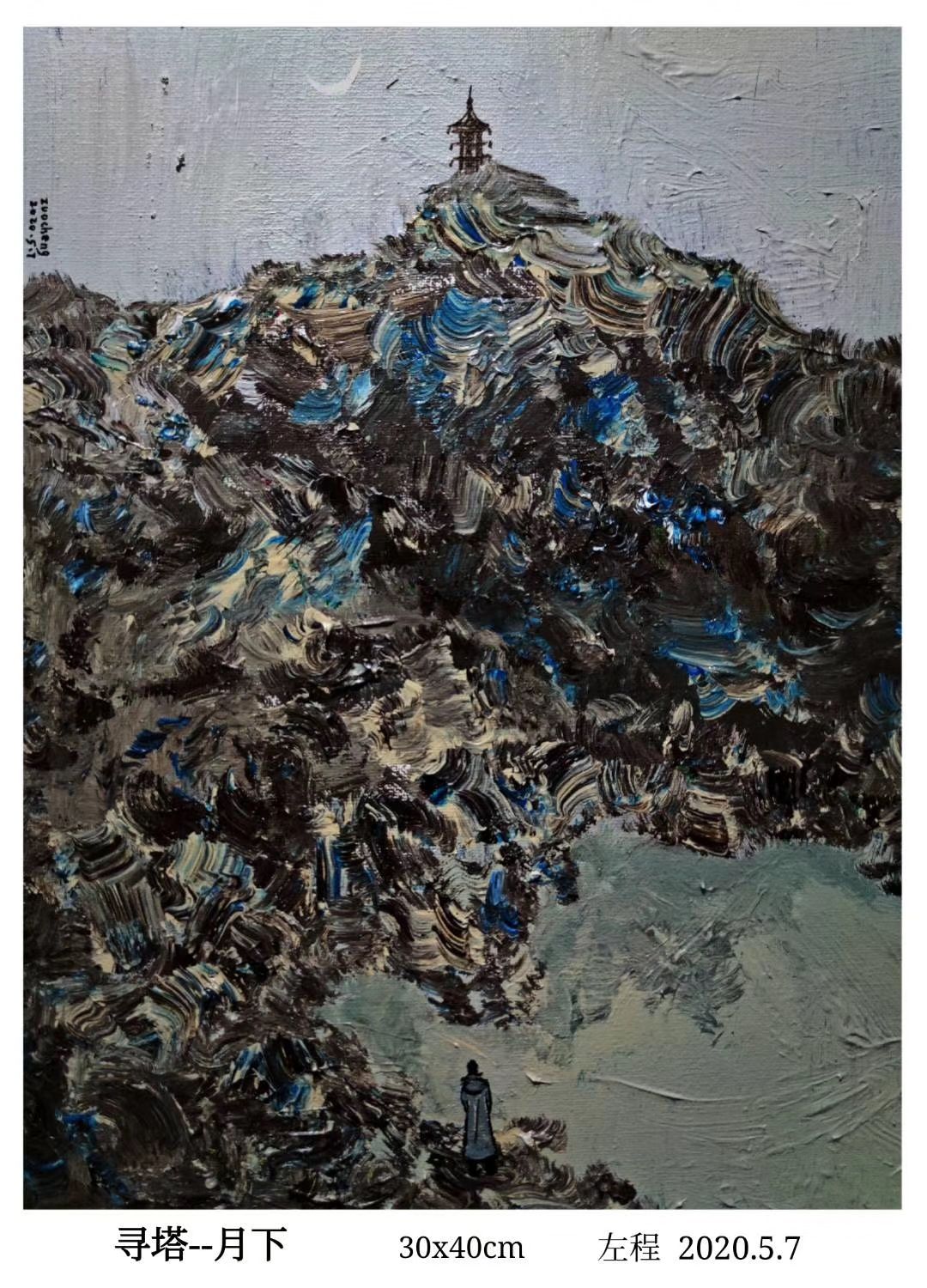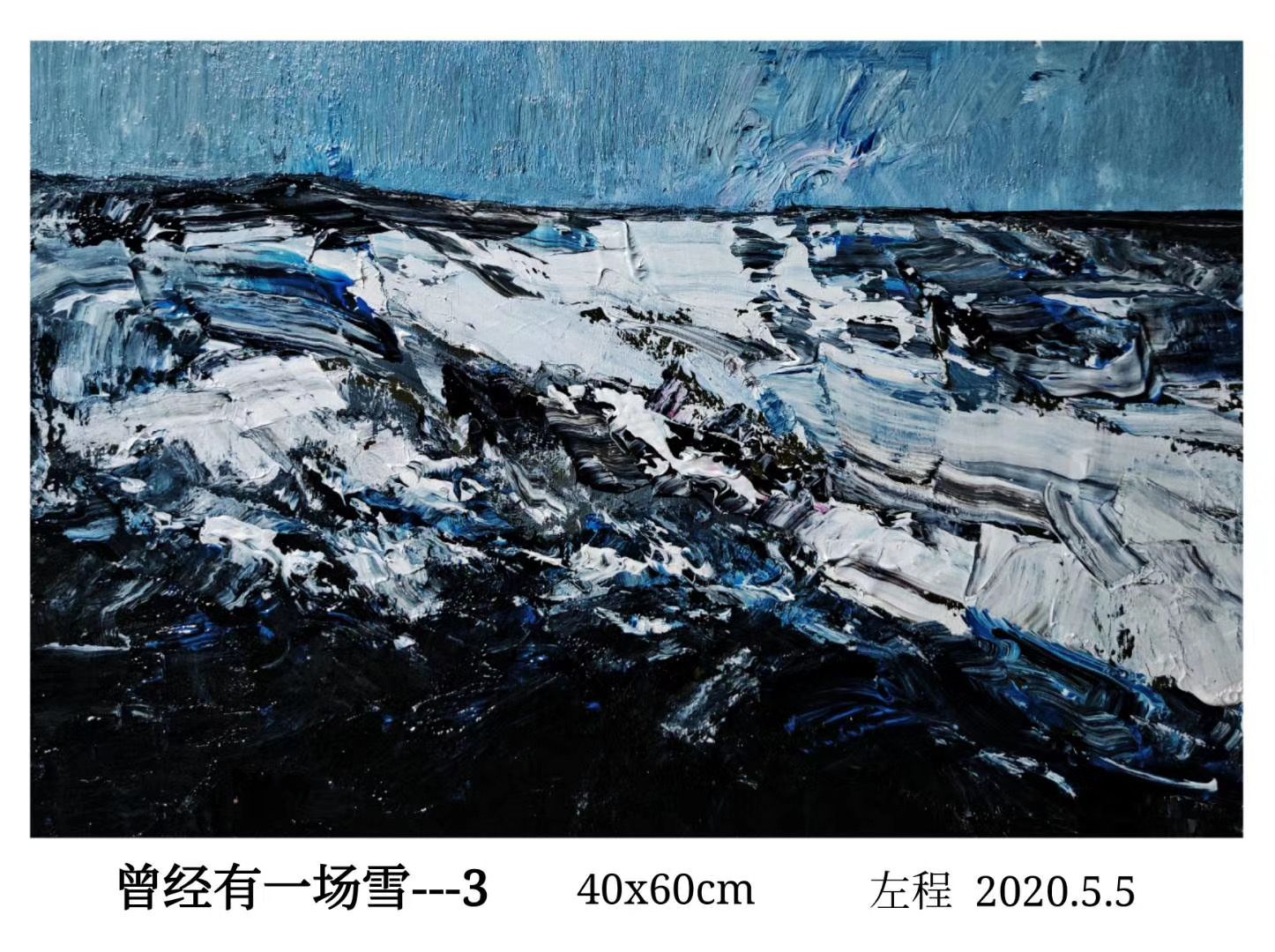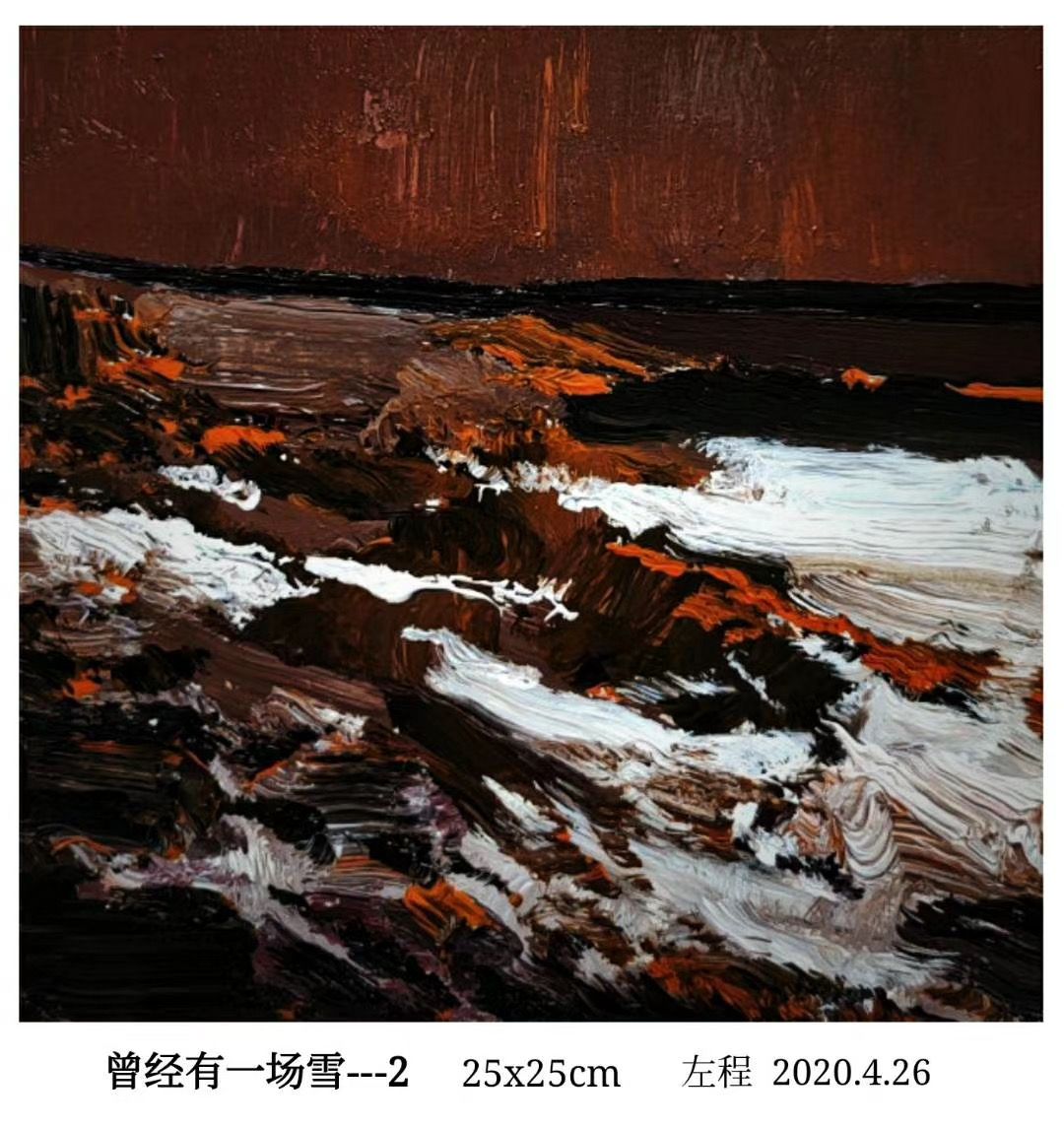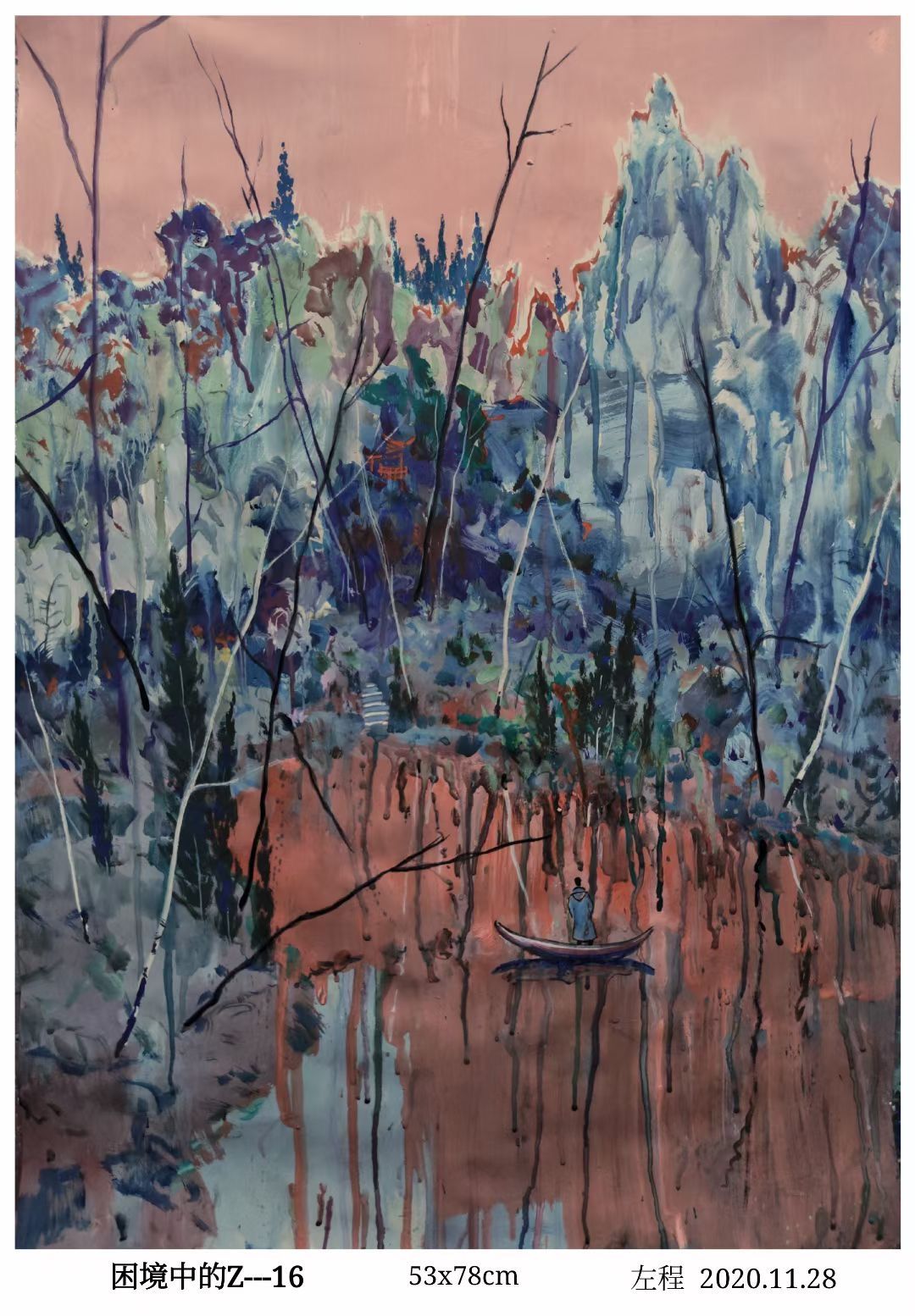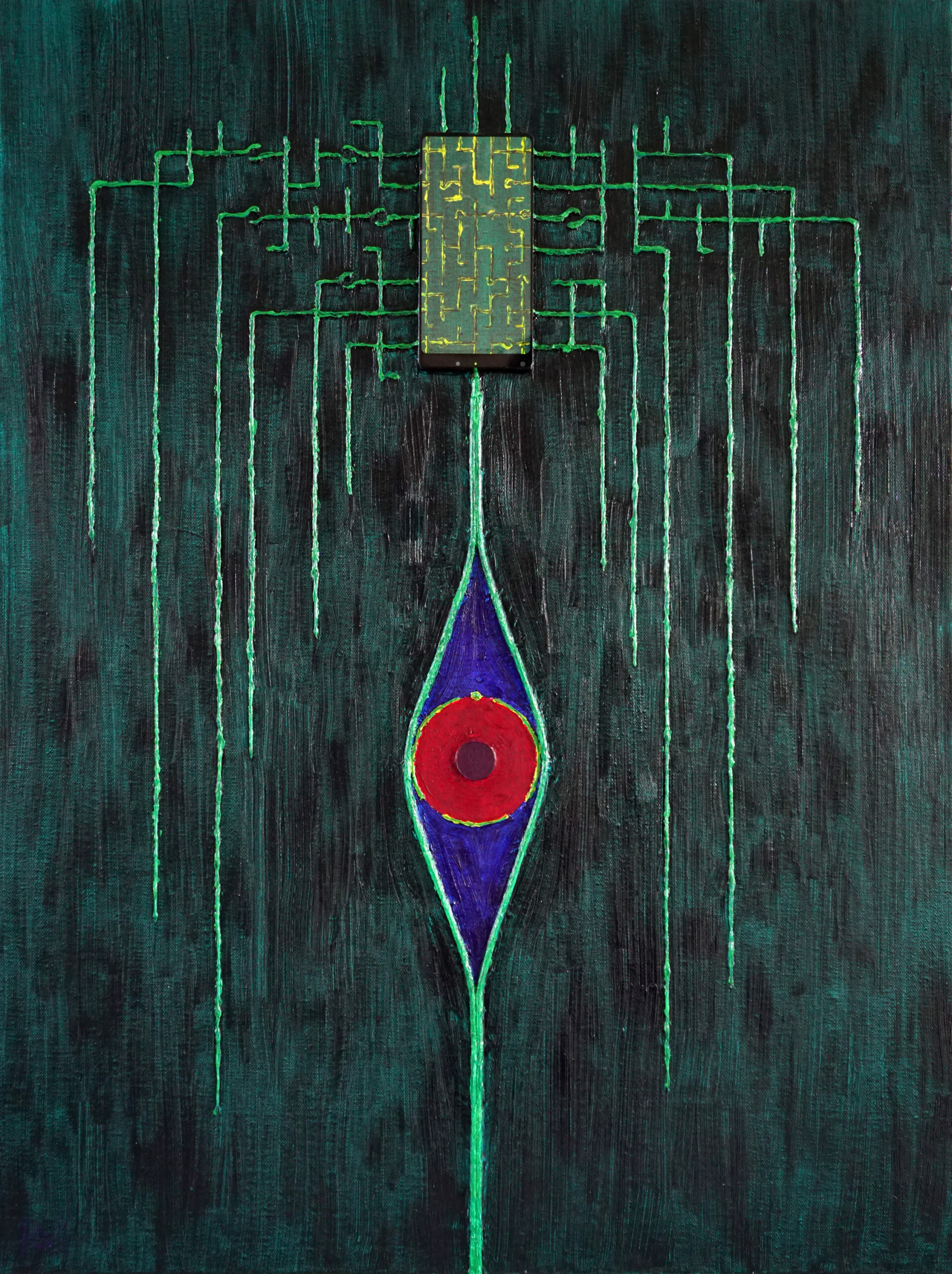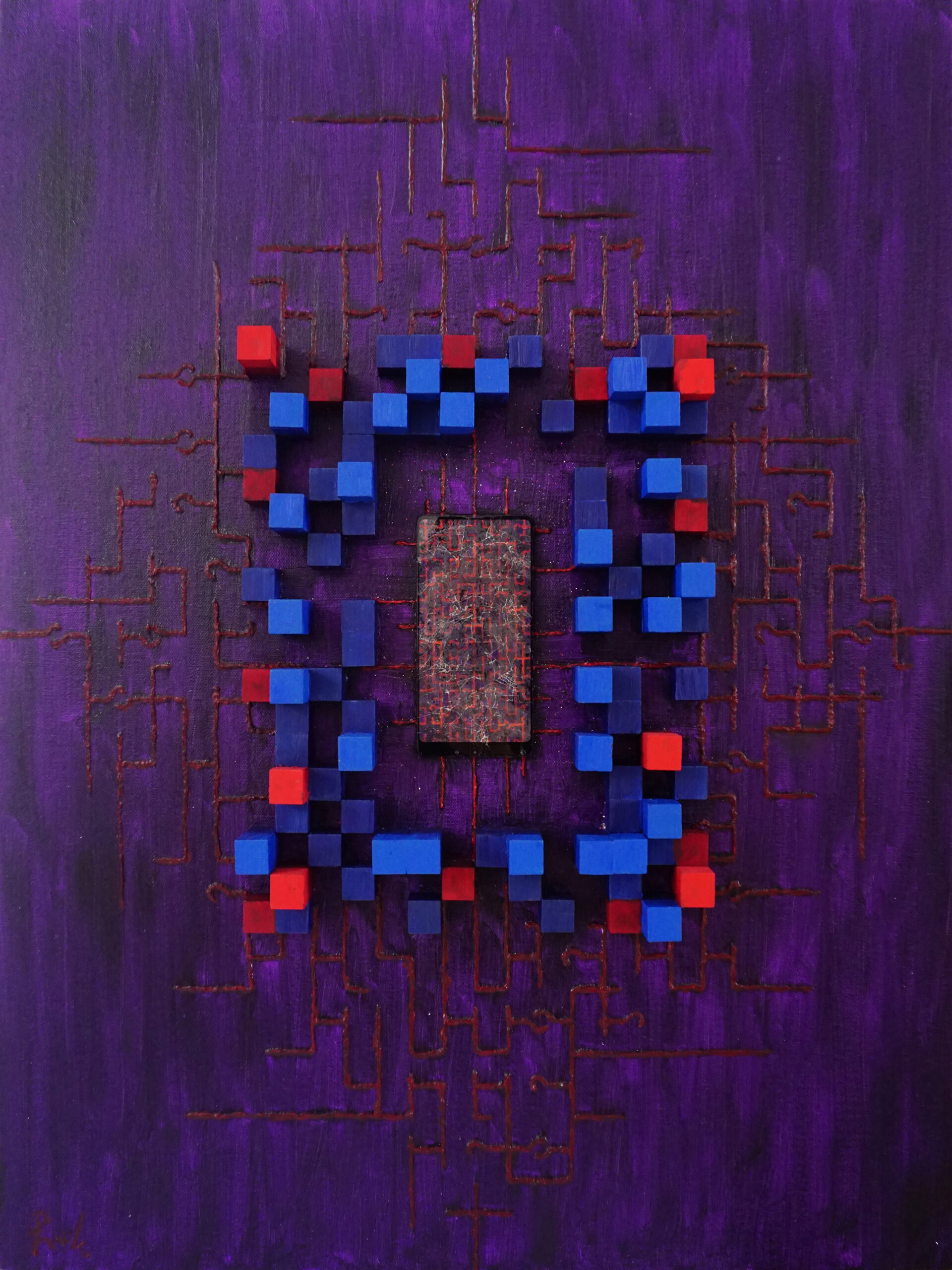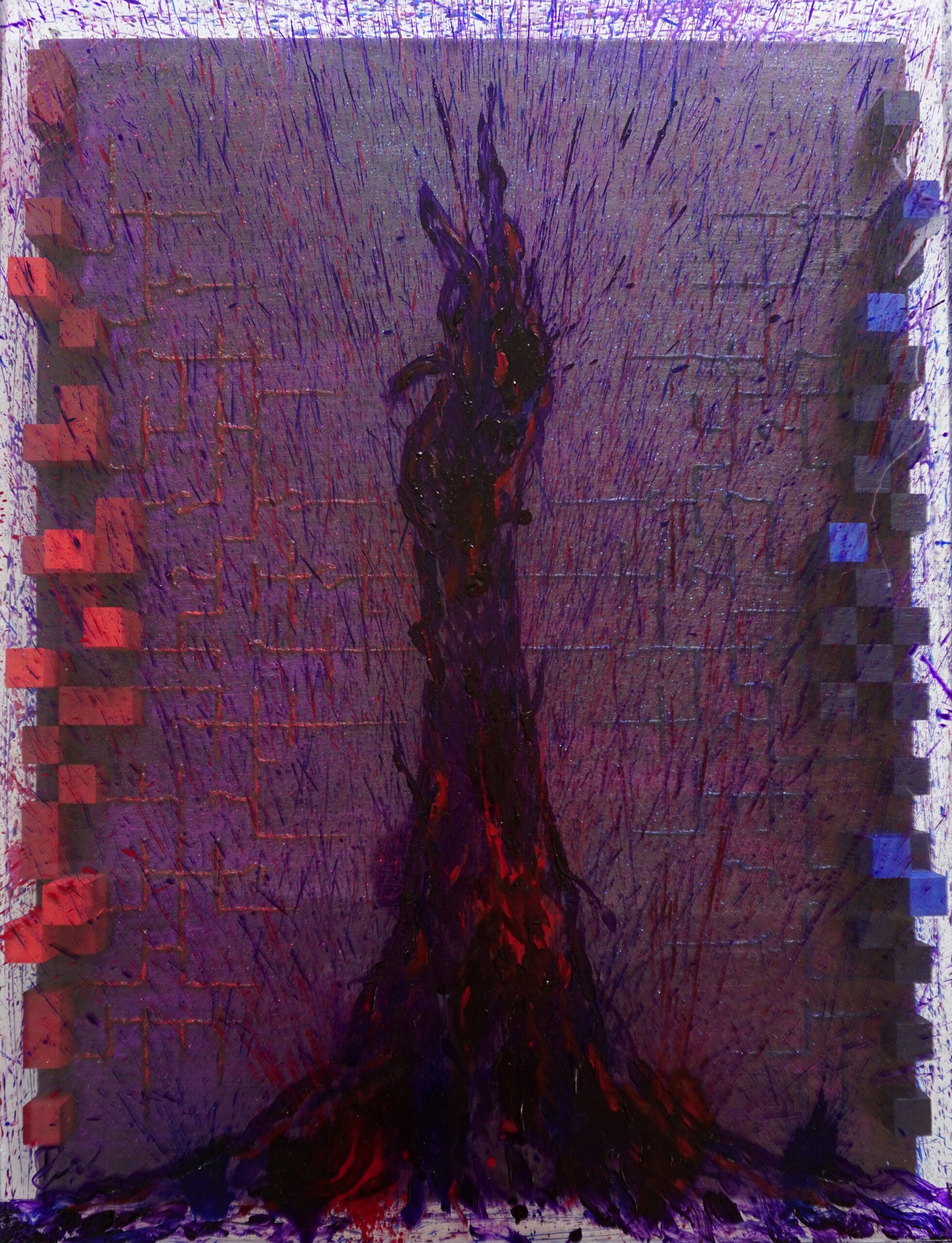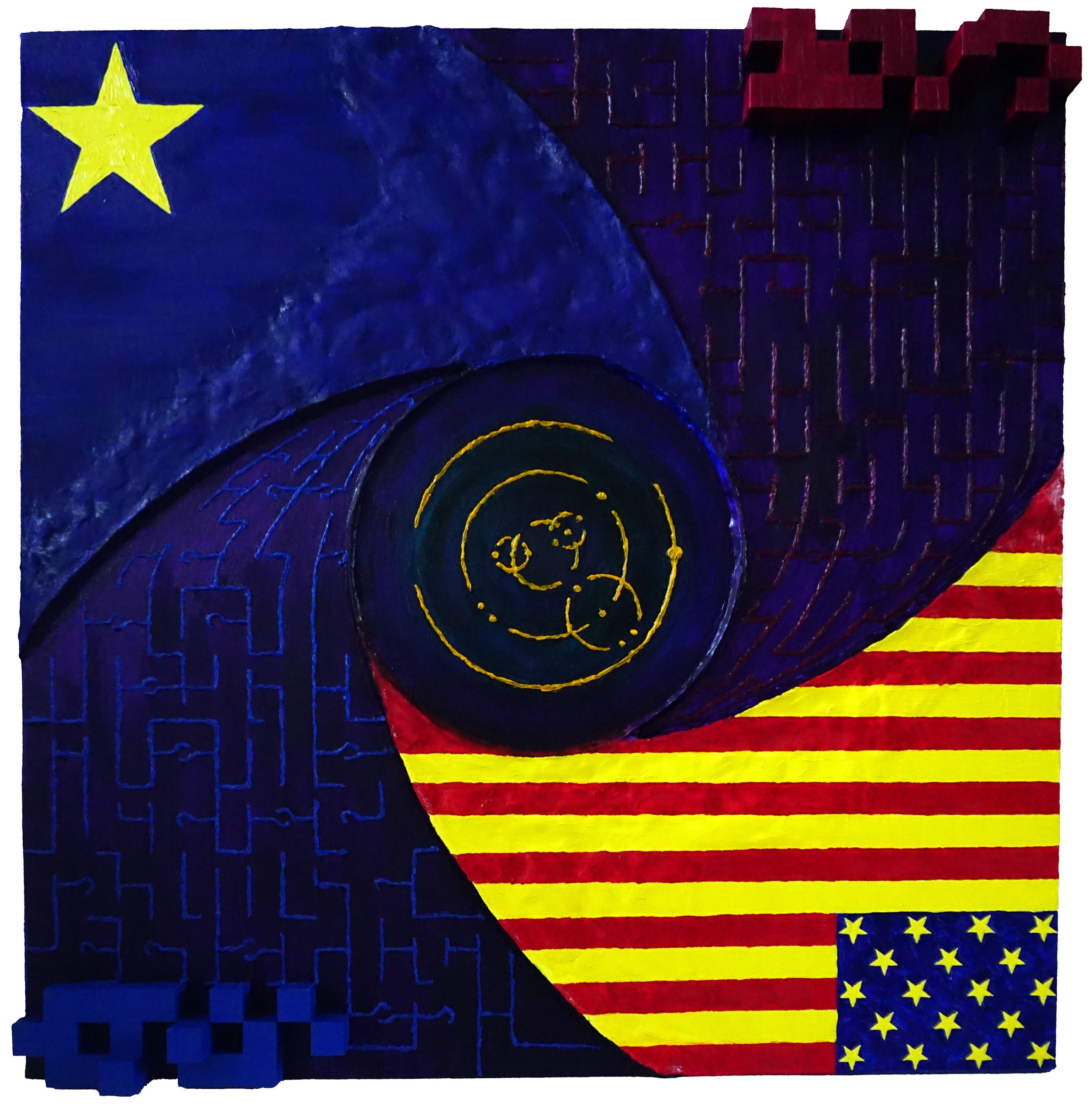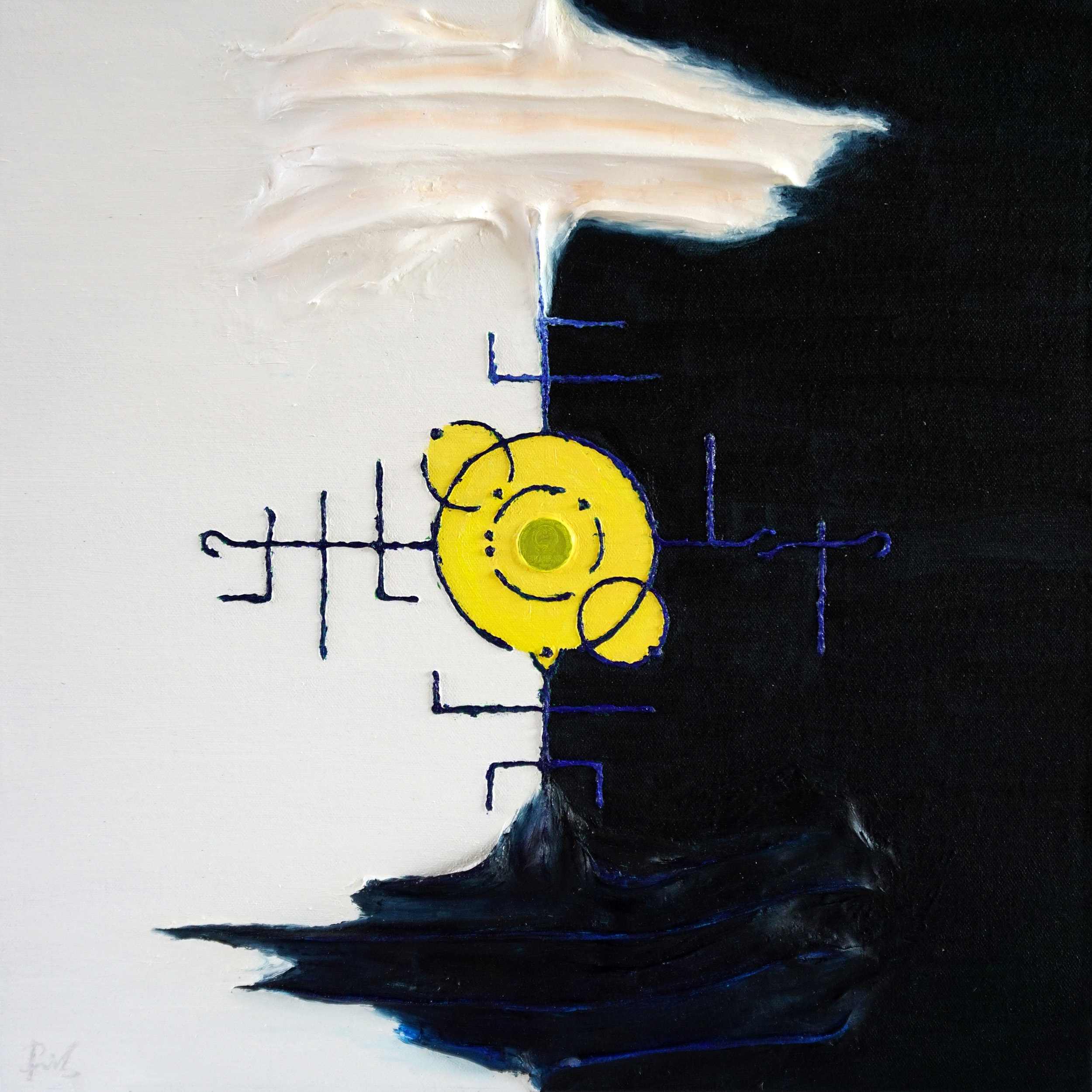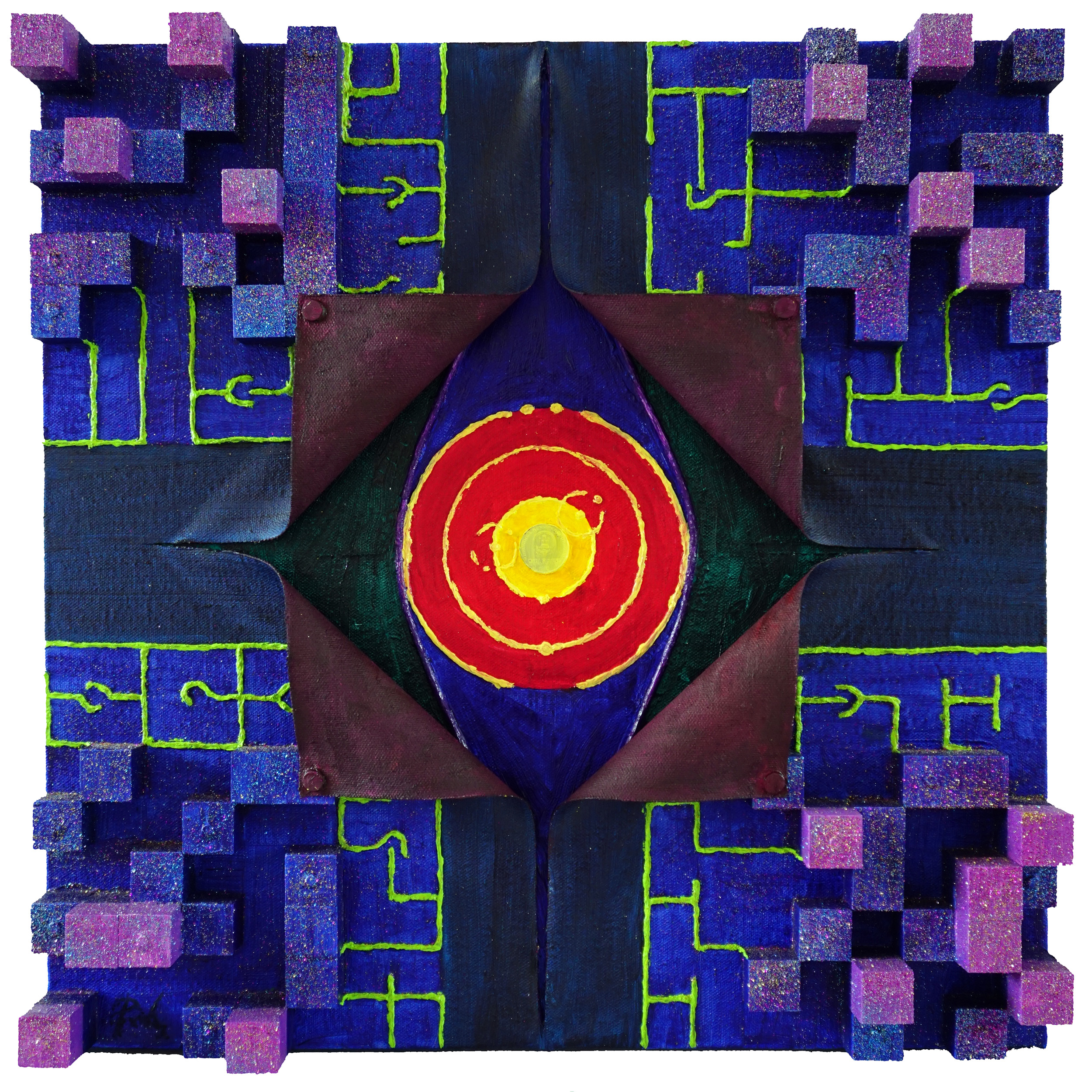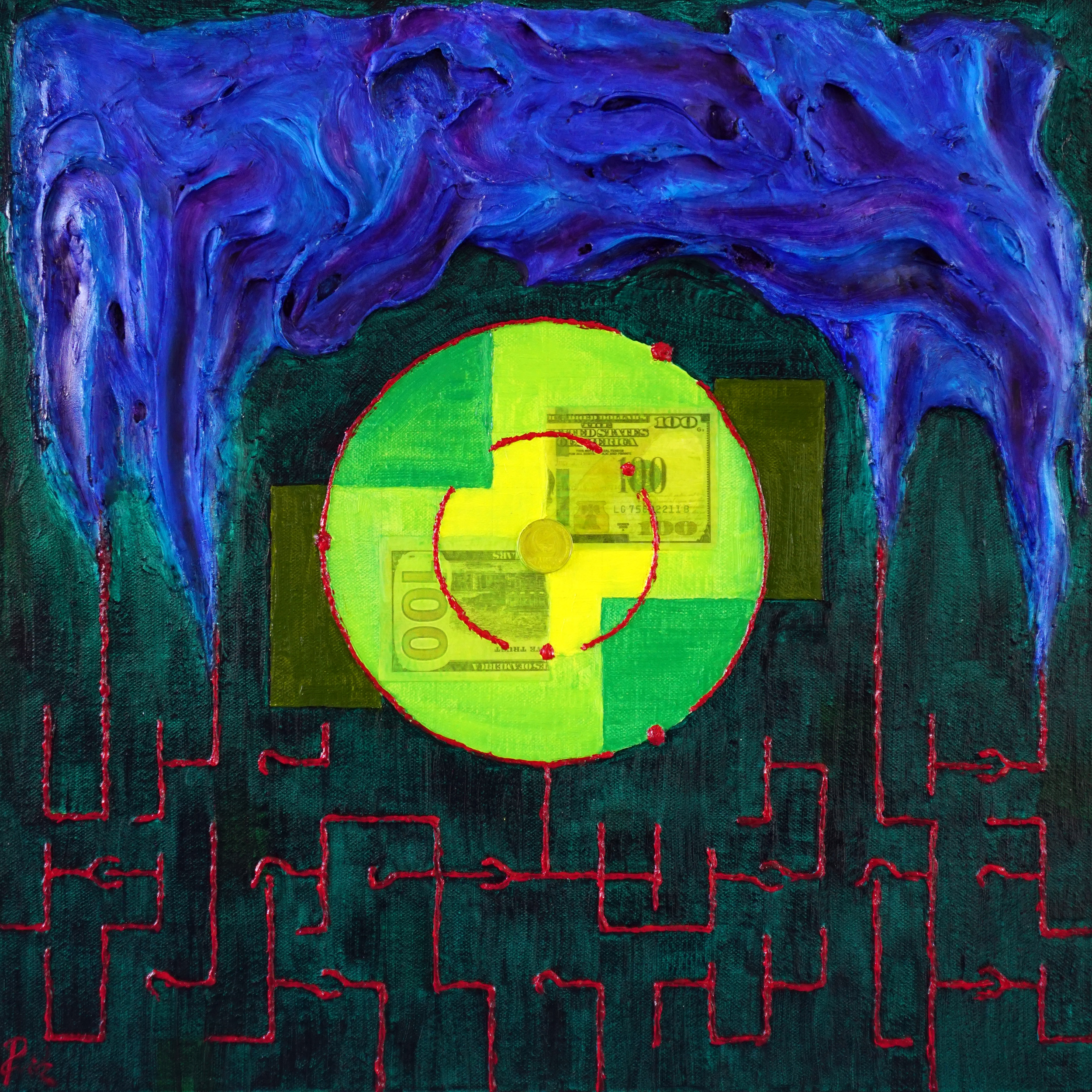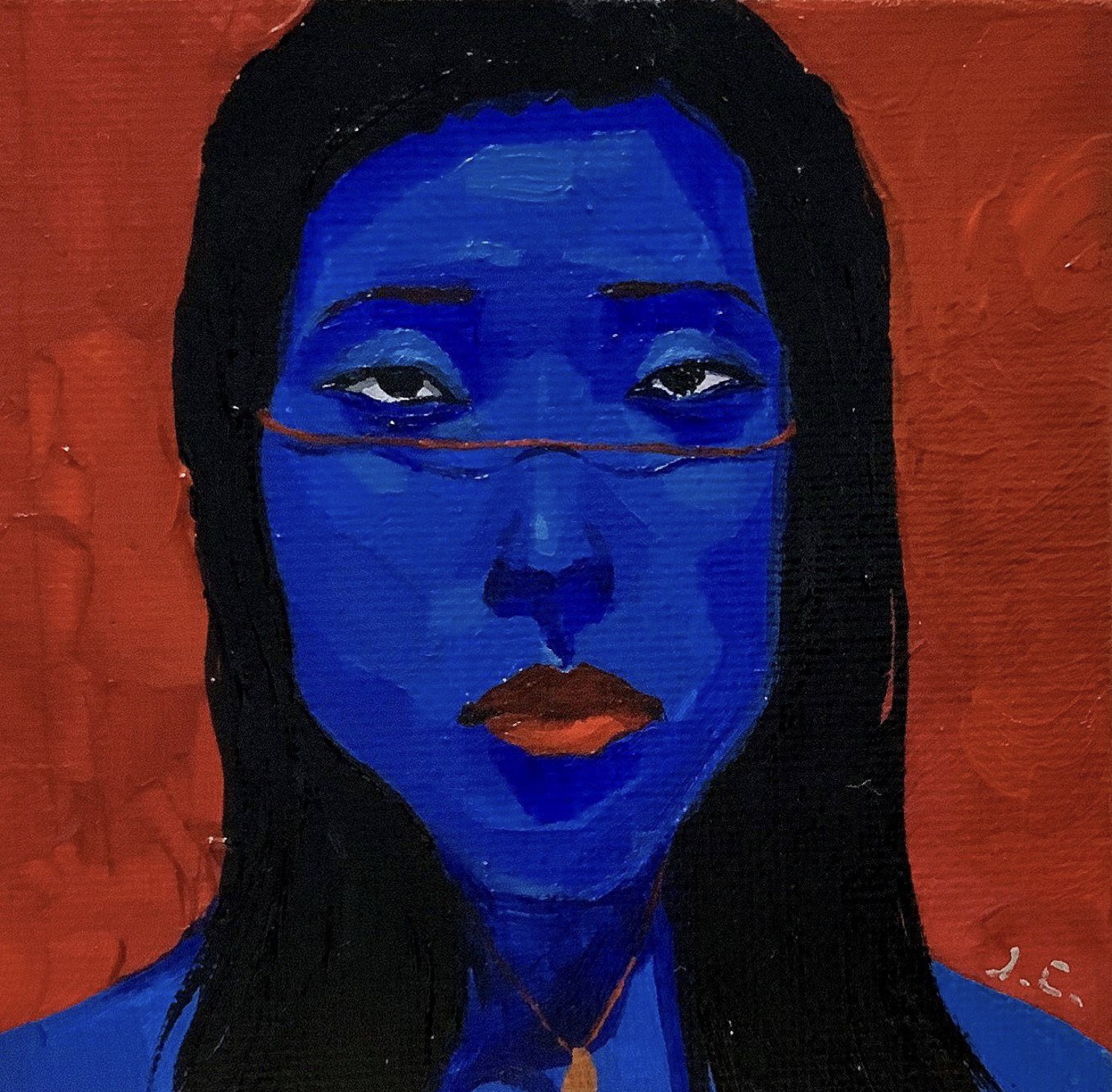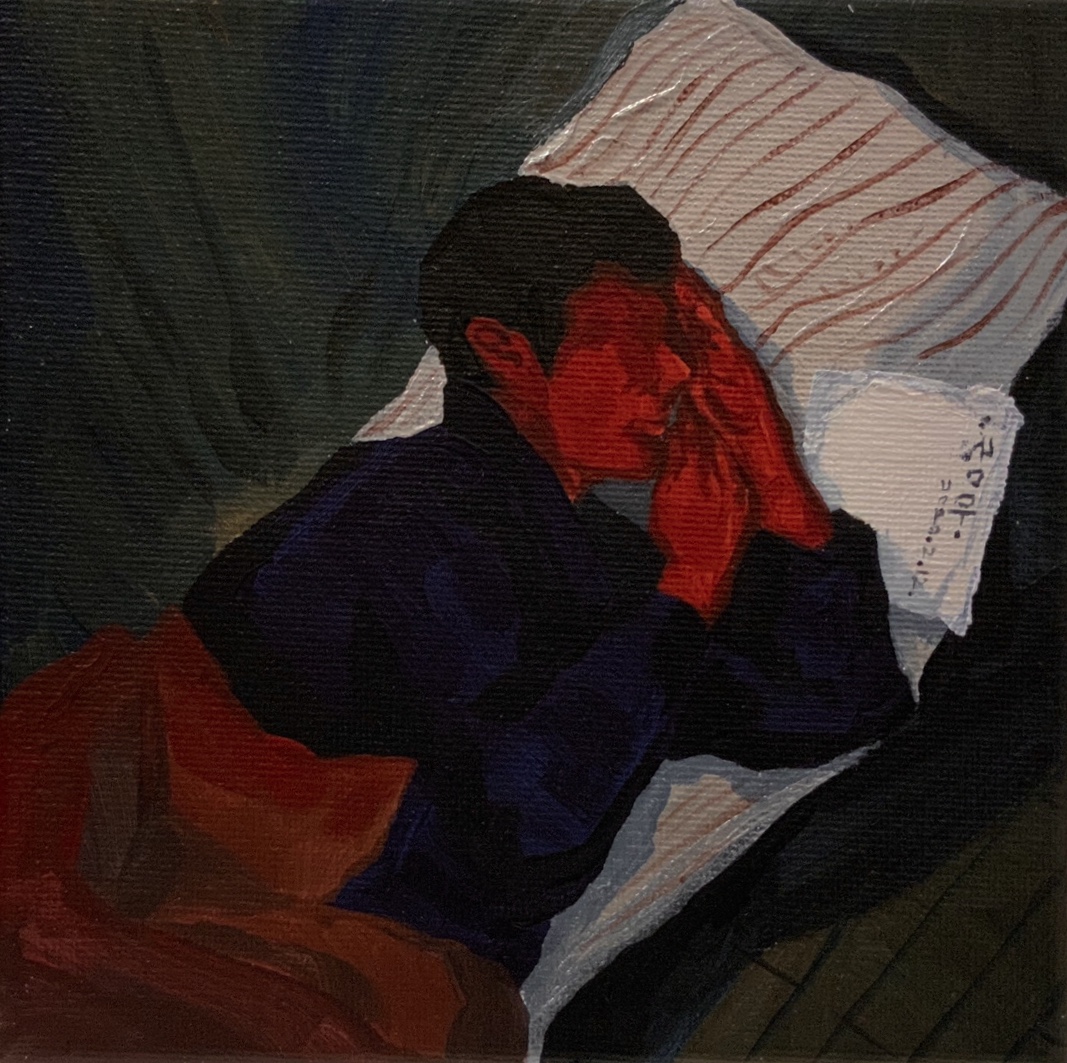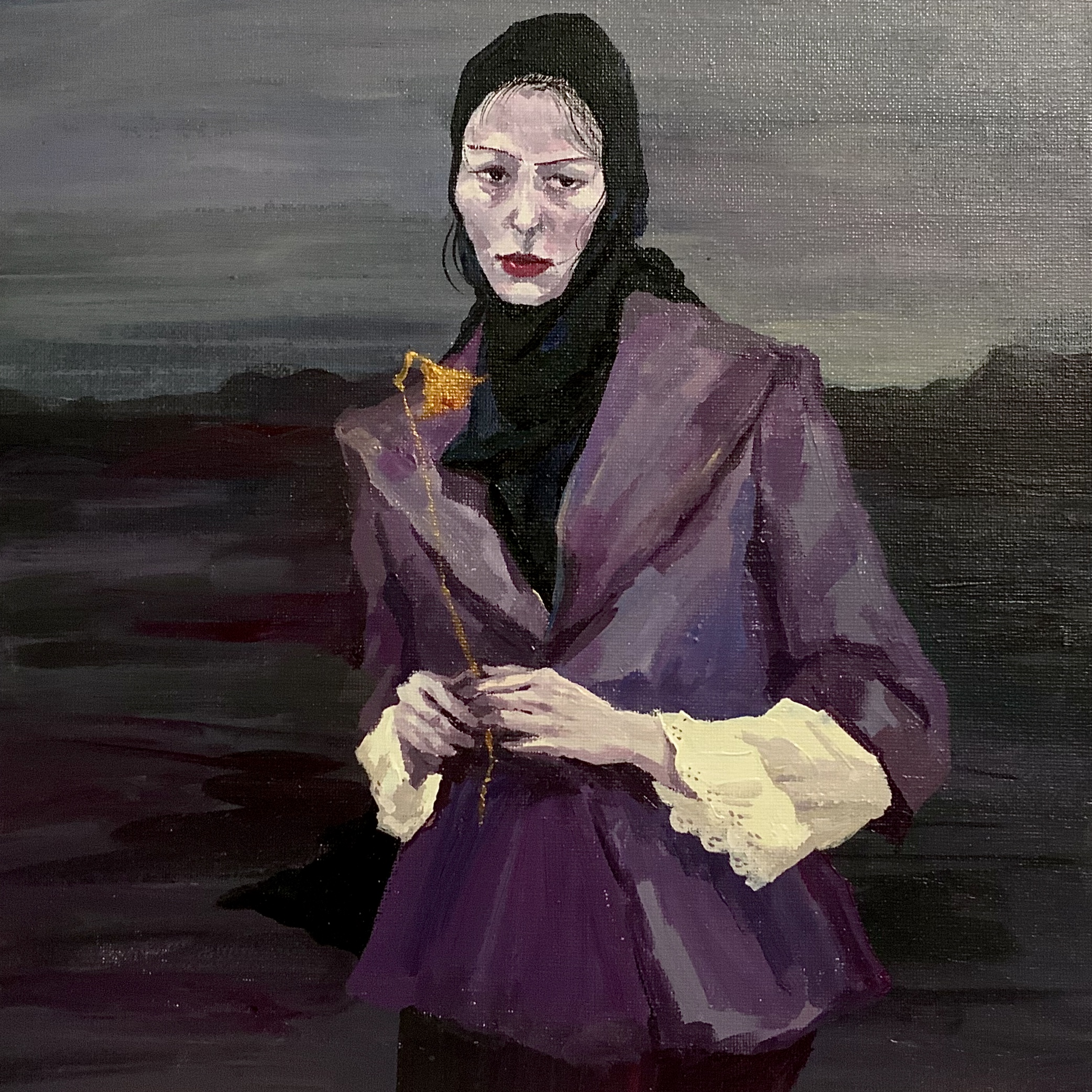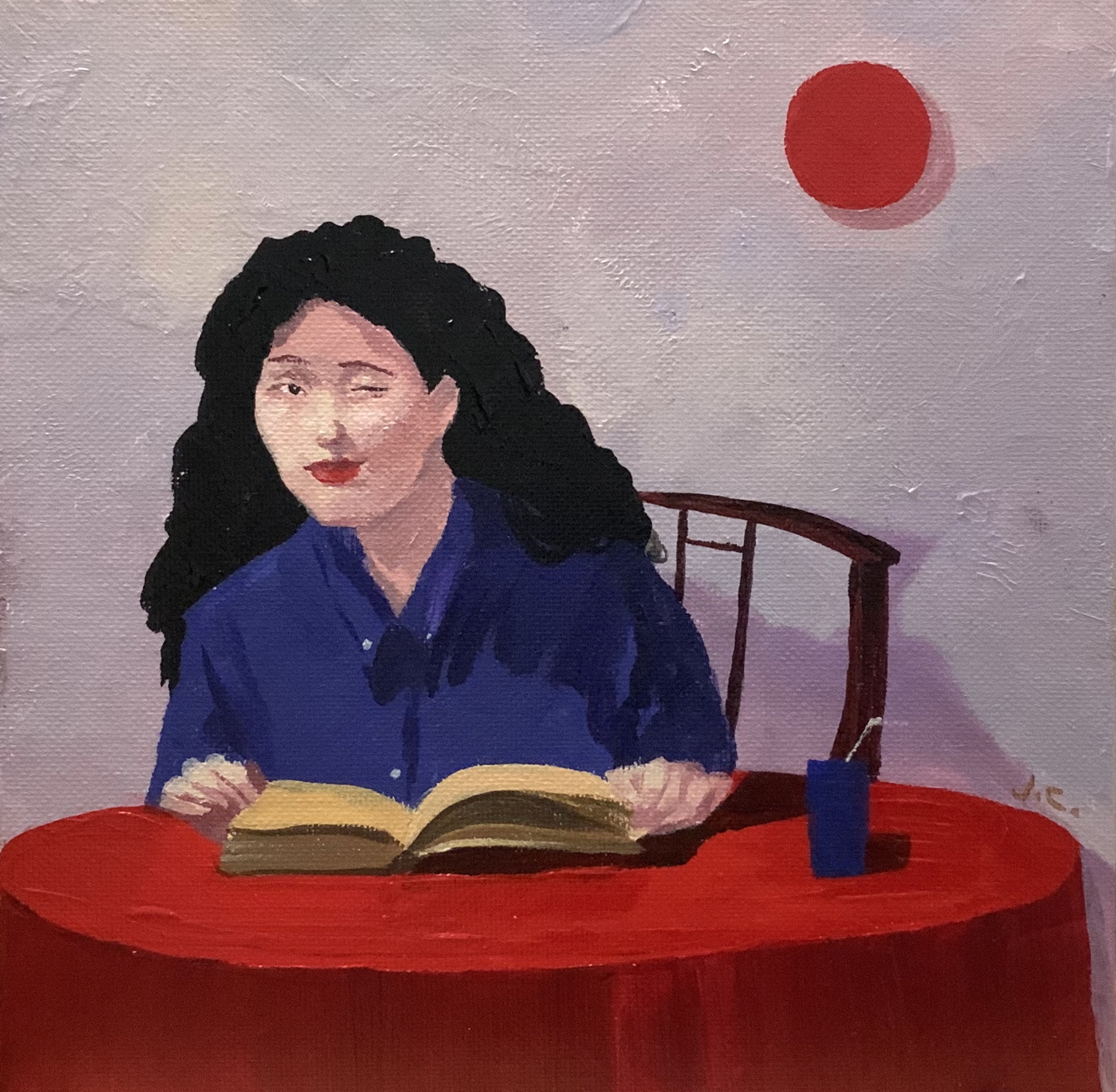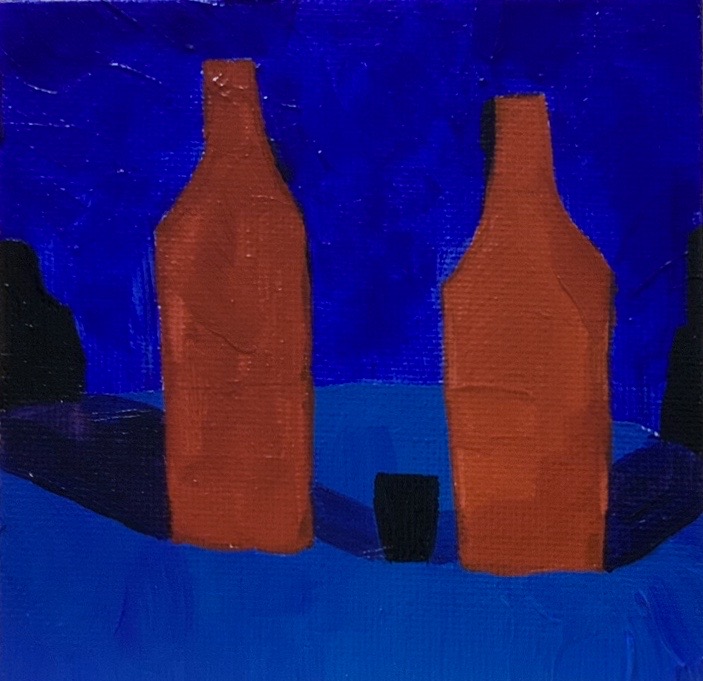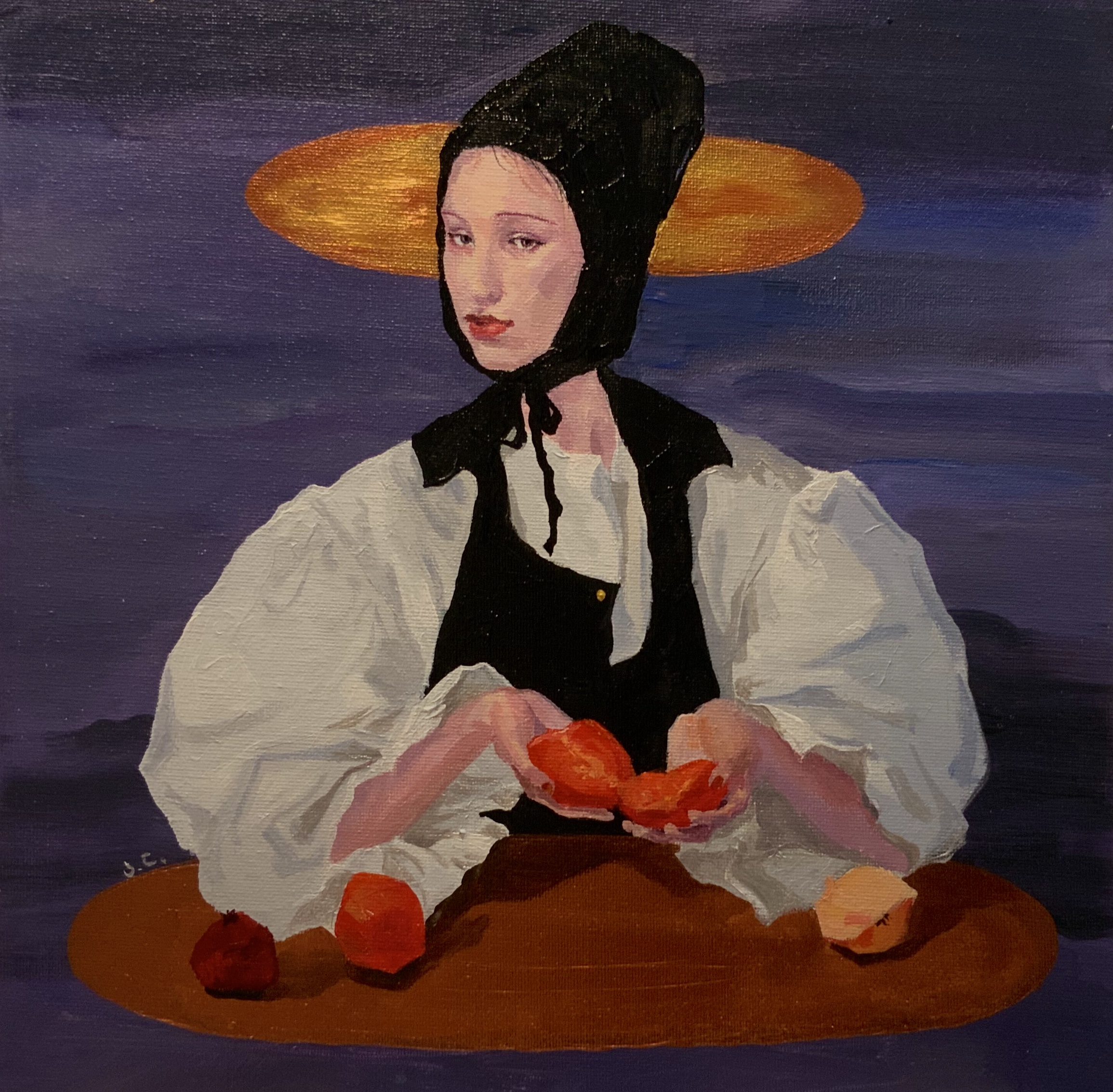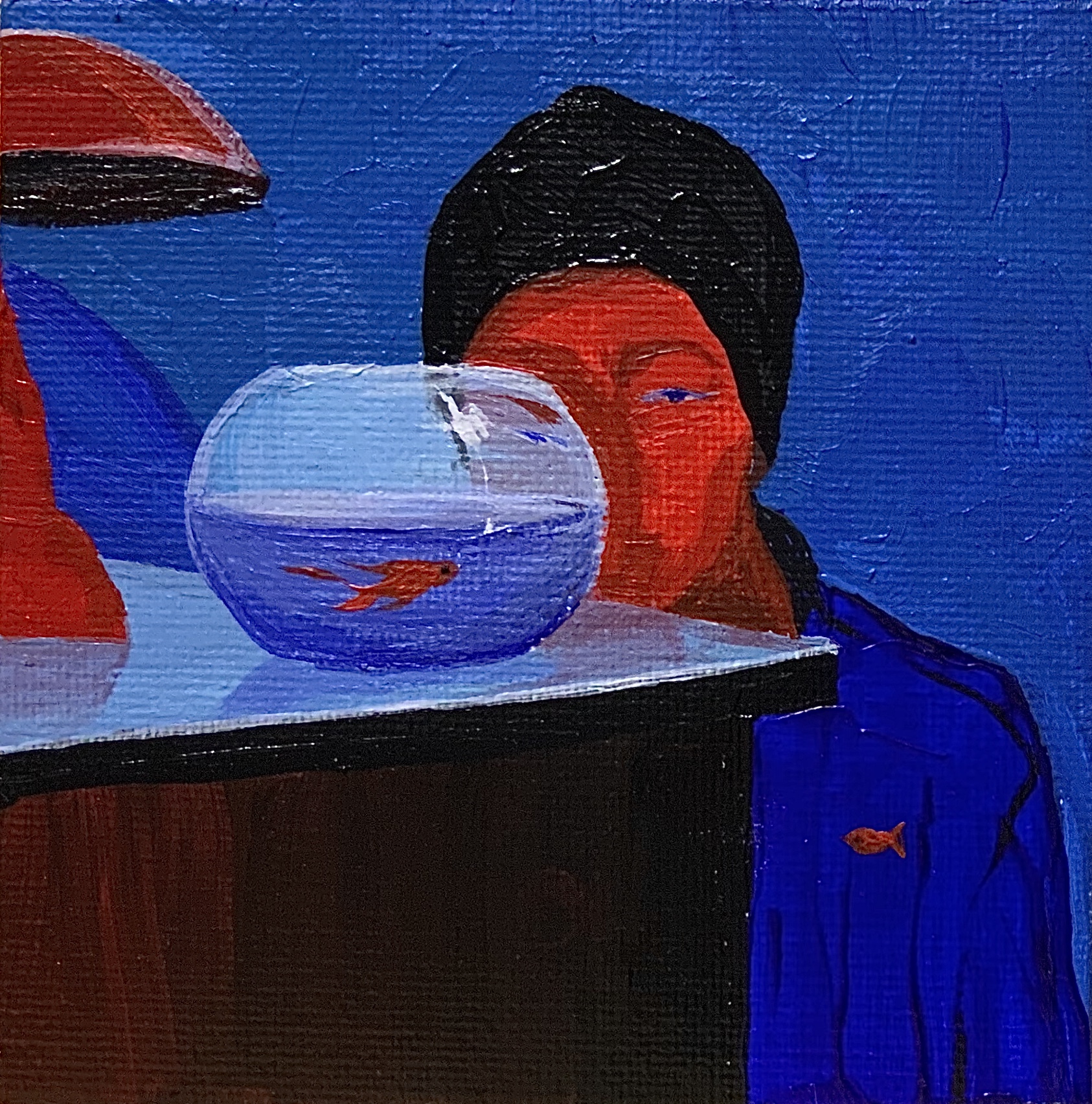Cheng Zuo 左程
Biography
Cheng ZUO, an artist mainly focus on oil painting. He is a member of Henan Artists Association and director of Oil Painting Research Association. He has repeatedly won national oil painting awards.
左程,油画艺术家,河南省美术家协会会员,油画研究会理事,曾屡次获得全国性的有关造型的艺术奖项。
Interview
Jackie GAO: In this talk, we left out the identities of teachers and students. Taking the pandemic as the central topic, we have made a subjective interpretation from the perspective of the artist. Before the conversation started, I prepared a few topics in advance to facilitate the development of the topic:
Art creation transformation, the exploration of the artist’s self-positioning, the profound experience during the period, the trend of Art turning to online.
These topics have been already informed to Mr. Cheng ZUO in advance, so the following dialogues were all naturally occurred around these topics.
这次采访我们撇去了老师和学生的身份,以疫情为中心话题,从艺术家的视角进行主观解读,我事先准备好了一下几个话题以便于话题的展开:
艺术创作的转变、艺术家自我定位探讨、期间的深刻经历、艺术转向线上的趋势。
这些话题已被提前告知于左程老师,故一下对话均是围绕这些话题的自然发生内容。
The names would be abbreviated as “Jackie” (Jackie GAO), and “ZUO” (Mr. Cheng ZUO)
(之后姓名分别写为“高嘉齐”、“左程”)
ZUO: Okay, let’s start with the first question, the impact of the pandemic on my life and art creation. In fact, the pandemic hasn’t affected my life that much. Art creation is a very private thing to me, so I usually stay in the studio alone, regardless of the outbreak. However, some things during this period, such as seeing people wear masks, the temperature checks before entering public places, etc had an impact. These things always reminded me of its cruelty, that is, facing the nature of it, like these sudden public health incidents, human beings are really fragile and insignificant in the grand scheme of things.
左程:好,那就从先从第一个问题开始吧,疫情的对我的影响和其导致的艺术创作上的变化。其实疫情对我生活本身的影响并不大,艺术创作对于我本身就是比较私密的,平时我也基本一个人待在工作室里,无关于疫情。但是在这期间的一些现象,比如每天面对的都是带着口罩的人,在进入公共场所之前需要测量体温等等,这些现象的出现,总会时刻提醒我疫情的残酷,即在大自然面前,如这种突发的公共卫生事件,人类的真的十分脆弱渺小。
Regarding the extraordinary events, it was not only the pandemic that has touched me the most, because, during the SARS period (China once suffered from SARS which was a serious infectious disease in 2003), I was in Beijing at the time, so as a result, I already had experience of facing a sudden emergency. What the pandemic reminded me of is when, a few years ago, I was in Côte d’Ivoire, Africa, there was a military coup d’état, so that we could suddenly hear the gunshots or see the riots in the streets. Every night we dared not even turn on the lights, and then we could see orange-red in the sky, anti-aircraft guns, and the streets were full of light and heavy weapons such as machine guns. All the experiences mentioned above have similarly inspired me, making me feel there it is only a moment between life and death.
关于印象深刻的事件和启发,其实使我感触最深的不只疫情,因为非典时期,我当时人在北京,其实已经有相关面临突发的紧急状况的经验了。同时还有几年前,我在非洲科特迪瓦的时候,当地发动了军事政变,以至于大街上总会突然听到枪声或者出现暴乱。每到晚上灯都不敢开,然后就会看见天空中橘红色的,高射炮什么的,街上也都是机枪等等的轻重型武器。上述提到的所有经历对我都有类似的启发,让我觉得是生与死之间只是一瞬间的事。
This kind of experience would actually become deeper and more painful for an artist, I would think about what is the value of our lives? Because after a lot of incidents, I felt that our human lives are short. The outbreak of the pandemic has once again stimulated these thoughts of the position of people, including political systems, human rights, etc., and of course the relationship between human being and nature. In fact, in the form of painting, installation, or video, they were all have reflected on social media taking the perspective of art for a long time. Such as what kind of position human beings had in social activities, what role they played, etc. Since there are countless such works, I might not give specific examples.
这种经历其实对于一个艺术家来说,会变得更深刻更痛彻,我会思考人的生命到底其价值在哪里?因为在好多事件发生后,我会觉得人命在其中简直如草芥一般。疫情的爆发再次激起了我对人的定位的思考,包括政治体制,人权等等,当然还有人和自然之间的关系,其实不管是绘画也好,装置也好,影像也好,都从很早以前开始了以艺术为视角的反思,比如人类在社会活动中处于什么样的地位,具有什么样的作用等等,由于这种作品不计其数,我就不在此一一举例了。
Jackie: Right, everyone was still operating on the basis that human beings are at the centre of the universe before the pandemic but after the outbreak, the focus of our thoughts might have shifted, that is, in the future, humans would view things more from the perspective of post-humanism, which means taking the view of all things as equal. This might be one of the inspirations that we could have obtained during this period.
高嘉齐:对,之前大家还比较推崇以人类为世界中心的观点,但是疫情爆发之后,会推动人类思想重心的偏移,即以后人类的视角,从万物平等的角度,看待事物,这也是我们苦中作乐所能获得的启发之一。
ZUO: I agree with your point that all things are equal, all beings are equal. All beings are not only humans, but everything in the world. Although we are at the top of the so-called “food chain”, we must not blindly exploit this and take too much from other beings, we should always be grateful, and we can’t get something for nothing.
The virus is merciless, it treats everyone equally, regardless of whether they are rich or poor. Therefore, I have always hoped that everyone could understand a point, that is, human beings are a community with a shared future on earth, and our destinies are connected together, so no matter what kind of discrimination, it should be cast aside.
左程:对你说这个特别好,万物平等,众生平等,众生就不只人类,而是世间的一切。我们虽然站在所谓的食物链的顶端,但是我们不能对其他事物进行一味地剥削和索取,要常怀感恩之心,并且不可不劳而获。疫情是不留情面的,它一视同仁,勿论贫富高低。所以我一直非常希望大家可以去理解一个观点,即人类是地球上的命运共同体,我们的命运是连接在一起的,故无论什么样的歧视,均是该被唾弃的。
Jackie: Exactly! To be honest, it is very hard for us to achieve the equality of all beings like post-human view. First of all, let alone all the other things that exist on earth, there are still inequalities around race, gender, culture, religion, etc. among us, which we need to overcome.
高嘉齐:非常赞同,其实后人类这样一个众生平等的角度,我们很难去做到。首先不说对于地球上存在的其他事物,我们本身之间就会存在一些种族歧视,性别歧视,文化歧视,地域歧视等等,这也是我们需要去克服的。
ZUO: Yesterday my son talked to me about watching a movie, called the darkness of human nature or something. And I told him that in places where the sun couldn’t shine on, that was, dark places. Where we can’t see, there is actually a lot of little things and creatures still living, which are also worthy of our serious consideration. I watched a documentary before. It was about the multitude of mice on the earth today than we humans but, we couldn’t see them because they are all underground, in dark places. So I suddenly understood a truth, that was when you are standing in the sunshine, in fact, there are many other things that happen in many places you can’t see. This is a deep but helpless realisation. For example, during the pandemic, many experts in the medical field were treating patients day and night, but there were still a large number of people who couldn’t be treated every day. We have witnessed the development of science and technology to this advanced state, and sometimes we are still unable to cope. This always makes me aware of the struggles of mankind. Therefore, as an artist, I always want to record these things. If possible in the future, use some form of images or videos, audio, etc., to leave some hints and warnings for future generations.
左程:昨天我儿子跟我聊,说看了一个电影,人性的黑暗什么的。我就告诉他,在阳光照不到的地方,也就是黑暗的地方,我们看不到的地方,其实有好多黑暗丑陋的东西也在生存着,这也是十分严重的。之前我看了一个纪录片,讲述的是类似于现在地球上老鼠的数量咱们人类的数倍?但是我们看不到,因为它们都是在地下,在黑暗的地方。所以我就突然想明白一个道理,就是当你站在阳光下的时候,其实在很多你看不到的地方,都会发生好多其他事情。这是一个痛彻心扉,但是无可奈何的问题。比如这次疫情,医学界的好多专家都不分昼夜地在救治病人,但是每天依旧还有大量的人无法被救治,我们眼睁睁的目睹科技发展到现在这种状态,有时却是无力回天,这总会让我察觉到人的渺小。所以作为艺术家总是想把这些东西给记录下来,想将来有可能的话,通过一些图像或者视频、音频等等,给后代留下一些提示和警告吧。
At the same time, the pandemic has caused many exhibitions and art activities to move online. This is an invisible opportunity and a test for the emerging digital media and so on. Because many exhibitions, museums, art galleries, etc., now have online exhibition halls, this allows us to browse a lot of works without leaving home, which is a good thing in itself. However, physical exhibitions would actually be more real, because we could go to all-round viewings of the artwork. The feeling is completely different when you are standing in front of an object versus looking through an electronic screen. What’s more, through the pandemic, we are finding that the Internet brings us more convenience, and many exhibitions can rely on the Internet for wider publicity. This is a positive aspect of pandemic life.
同时,疫情导致很多展览和艺术活动都变成线上的形式,这无形中对于现在新兴的数字媒体等等也是一次机会,也是一个考验。因为好多展览,博物馆和艺术馆等等,现在都有了网上展厅,这使我们足不出户就可以浏览好多作品,这本身是好事。但是线下其实会更真实,因为我们可以去全方位观赏一个艺术作品,站在本体面前和你通过电子屏幕去看,感受是完全不同的。同时,通过疫情的推动,我们会发现网络会带来更多的便利,很多展览完全可以依托互联网进行更广泛的宣传。从这个角度来讲,这是相对积极的。
Jackie: Agreed, to give a very simple example. Perhaps it is because of the spread of the Mona Lisa‘s image that lead more people want to go to the Louvre to see the physical work. This can indirectly prove that the artwork cannot be replaced but, using new media as a means could make it spread farther, including the values and concepts of the work itself, and even the story of the work, and so on.
高嘉齐:是的,举个很简单的例子,或许就是因为蒙娜丽莎的照片的传播,才导致更多人想去卢浮宫,看一看庐山真面目。这可以间接证明本体无法被替代,但以新媒体为手段却可以让传播的更远,包括作品本身的价值观和观念,甚至于作品的故事等等。
I have also thought about such a problem before, that is, whether physical exhibitions would turn to be totally online. However, to a certain extent, much of art’s power is just derived from its authenticity in the real world, which helps its resonate with the audience, or the visual experience of the viewer when witnessing its physical form. So I think that once we have the opportunity, we will return to the physical world, because the charm of Art itself comes more from the sensory experience it brings to people.
我之前也思考过这样一个问题,就是线下展览是否会被线上取代。但是某种程度上,其实艺术很多的力量恰恰来源于它在现实世界中具有的真实性,就是所谓跟观众产生的共鸣,或者是观者在亲眼目睹其实体形制的视觉经历。所以我认为,我们一旦有机会还是会回归线下,因为艺术它本身很大的程度的魅力,就是来于带给人们的感官体验。
ZUO: I agree. Offline and online can definitely coexist, so that artworks can be spread more widely and seen by more people which is quite good. From this point of view, online sharing of work is faster but, offline exhibitions are also not replaceable. For example, when we’re facing the David sculpture or other Michelangelo’s works, when we’re looking at figurative three-dimensional artworks, and even some sculptures can be touched, we can almost feel its soul inside. The texture, including the folds of clothes, etc., these are the things that can’t be experienced when we view the image online. The image is flat, and when we’re standing in front of the work in reality, the experience it brings to us is beyond description.
左程:对,这个观点咱们是一致的。线下和线上肯定会并存,让艺术作品能传播的更广泛,并且让更多人能看到固然是好的,以此来看,线上速度相对更快,但是线下的展览也是不可被取代的。比如,当我们面对大卫的雕塑或者米开朗基罗的作品时,当我们看到具象立体的艺术品,甚至有些雕塑都可以被触到的时候,我们是能感受到它的灵魂的。那种雕刻的纹理感,包括他那衣服的褶皱等等,是在面对图像所不能体会的。图像是平面的,而当我们真实地站在作品面前的时候,其所带给我们的震撼力是无以复加的。
Actually, artists firstly come to be human, he might have other positions of his own, such as a teacher, or a postman, etc. I don’t think this prevents him from becoming an artist. Artist is not just a tag. Like, who doesn’t define himself/herself as an artist, but he/she has some conscious artistic activities, then I might think he/she as an artist. In my process of creating, I always believe that technique as a part of painting is not the soul of Art. Because no matter what tools and materials are used, even drawing on the ground with a stone, to a certain extent, it is to convey something with technique. So the most important thing is thoughts which are inspired by some social activity.
其实现在很多的艺术家,他首先要是人,他有自己的其他定位,比如教师,或者邮差等等,我觉得这都无法妨碍他去作为一个艺术家。真正的艺术家,不是名义上的,比如谁给他的定位是艺术家,而是他自己有一些自觉的艺术活动,我认为他就可以成为一个艺术家。在我的这个创作过程中,我一直认为,技巧作为绘画的一部分,不是灵魂。因为不管用什么工具和材料,甚至是拿一个土块儿在地上画,在某种程度上都是在以技巧去传达一些东西。所以最关键的在于思想。比如从社会活动中得到的启发。
In fact, this pandemic has also given me a lot of inspiration. Although people are getting more and more alienated, this very difficult time still could reflect our unity. For example, when the pandemic in Wuhan (the first city suffered form pandemic in China) was severe, because everyone was in isolation, they were very depressed, and as a result they would sing the national anthem or some nursery rhyme together through the window on to the street. And hearing from my students in Italy, when they were quarantined, they held small community concerts at home coordinated between neighbors, like someone would play the violin, someone was in charge of other things, and so on. These things made me suddenly aware of the beautiful and kind side of the human nature, which might not be fully highlighted in normal times. And in this crisis of the pandemic, the brilliance of these human qualities l was even more remarkable, and it’s really touching.
其实这次疫情也给了我很多启发,就是虽然人和人之间越来越疏离了,但是这个很艰难的时刻又能体现出我们的团结。比如说在武汉疫情严重的时候,因为大家都在隔离,本身心情都很低落,结果他们就会隔着窗户,一起唱国歌儿。在意大利隔离的时候,他们在上面就举行小型的社区的音乐会,邻里之间协调,谁拉小提琴,谁负责其他等等。这些现象能让你突然察觉到人性中的美好,善良的一面,这些或许无法在正常时期被充分的凸显。并且在疫情这种危难之际,这些人性的光辉更耀眼,更让人潸然泪下。
Jackie: Yes, after the outbreak, there were riots in many parts of the world and so on. This reflected the other side of human nature, but simultaneously it would also strengthen the beauty of human nature to a greater extent, and will also inspire many kind human qualities. This depends on which aspect we look at.
高嘉齐:对是的,疫情爆发后,很多地区出现暴乱等等,这体现了人性之恶,但同时也会更大程度上把人性的光亮加强,也会激发很多人性之善,这或许在于我们从哪一个方面看吧。
Also, regarding what you said before, when we touch those sculptures, we can feel it has a soul. This reminds me of the concept of the “distributed personhood” (an anthropology concept raised by Alfred Gell), which is an artwork placed there, when everyone is looking at it and thinking, whether it is about dissent or compliment, they’re actually taking part in the personality of this artwork. It is equivalent to taking a seed from each person from the work, and then the seed will bloom in the process of thinking it through. This is based on each person has different ideas and varied personal experiences, but in fact a certain part of the thoughts involved in this work has been absorbed by them.
还有,关于之前你提到的,触碰到那些雕塑的时候,我们会感觉到它是有灵魂的。这让我想到一个了一个分裂式人格的概念,就是一个艺术作品,当它被放在那里,每个人看到它并产生思考的时候,无论是异议或是赞美,其实他们都拿走了一部分这个作品的人格。等于说是从每个人从作品中拿走了一粒种子,然后种子会在思考的过程中开花,这基于每个人想法不同,个人经历是不同,但是其实这个作品的某一部分思考是被他们吸收了的。
ZUO: For me, no matter when the pandemic subsides, its impact will be with us for our the rest of our lives. And maybe after it is completely over, when we look back, it would be like the scars left by a fall during childhood. It is always with you, and also reminds you of a certain period of time. From this perspective, it seems to have some artistry that we will pass on.
左程:对我觉得无论疫情何时结束,它的影响都会伴随我们终生,只不过在它彻底结束后,我们回过头去时再看,它就会像我们小时候摔倒留下的疤痕一样,伴随着你,也时刻在提醒着你某一段时光,从这个角度看,它好像又带有了一些我们赋予的艺术性。
As I’m talking to you in my studio now, and I can see my original gouache sketch when I look up. I remember that many people have asked, sometimes the people on it are in the wasteland, sometimes in the snow, and sometimes there are people in the jungle. Shadows flicker and appear, what is the meaning of this symbolic thing? In fact, I really painted myself, just like I am many different actors. He was willing to try different movies and different roles. I also turned myself into a character that appeared in the picture, and imagined him appearing in various situations. I want to be in places I can’t go, such as volcanoes, flying saucers and so on.
我现在在画室跟你谈着这些,抬头就可以看到我原来画的水粉的小稿,就想起好多人都问说,上面的人有时在荒原,有时候在雪地,有时候丛林中间有人影忽隐忽现,这种所谓符号性的东西是何用意?其实画的真的就是我自己,就像好多演员,他愿意尝试不同的电影,不同的角色,我也把我幻化成了就画面中出现的人物,幻想他出现在各种各样的情境中。一些去不到的地方,比如火山,飞碟等等这些天马行空的东西,我都想置身其中。
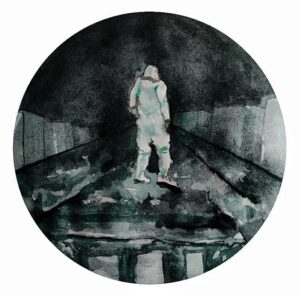
Honestly, the happiness of artists lies in here. During the lockdown, I can integrate myself into my works like an actor, and I could be in a variety of environments, such as spaces that we couldn’t go to, this is interesting. Just like we are reading a novel, 1,000 people have 1,000 Hamlets in their minds. As a result, I hope I could turn thousands of small people into paintings, going to different places and trying different lives instead of only having a single life track stuck in reality.
疫情环境下,其实艺术家幸福的地方就在于此,可以跟演员一样,把自己融入到作品里,并且可以是各种各样的环境,比如自己想去去不到的四维空间什么的,都十分有趣。就像我们在看小说一样,1000个人心目中有1000个哈姆雷特,我就希望我可以幻化为画面上成千上万个小人儿,去往不同的地方,尝试不同的生活,而不是同现实中一样,我们每个人只能拥有的单一生命轨迹。
Jackie: Your paintings are like diaries. When I was looking at them, I could feel that they are created by the same person, but it seemed that his daily mood was different according to his varied experiences. These paintings could express a lot of your own potential thoughts or the mood of the day unconsciously. I think this is particularly interesting.
高嘉齐:你画的那些小人,在我看来就像日记一样,能感觉到是一个作者,但是好像每天的心情啊,和生活经历不尽相同。其中有些创造可能就是无意识的把很多自己的潜在想法或者是当天的心情,心境等等表达出来了,我觉得那个特别有意思。
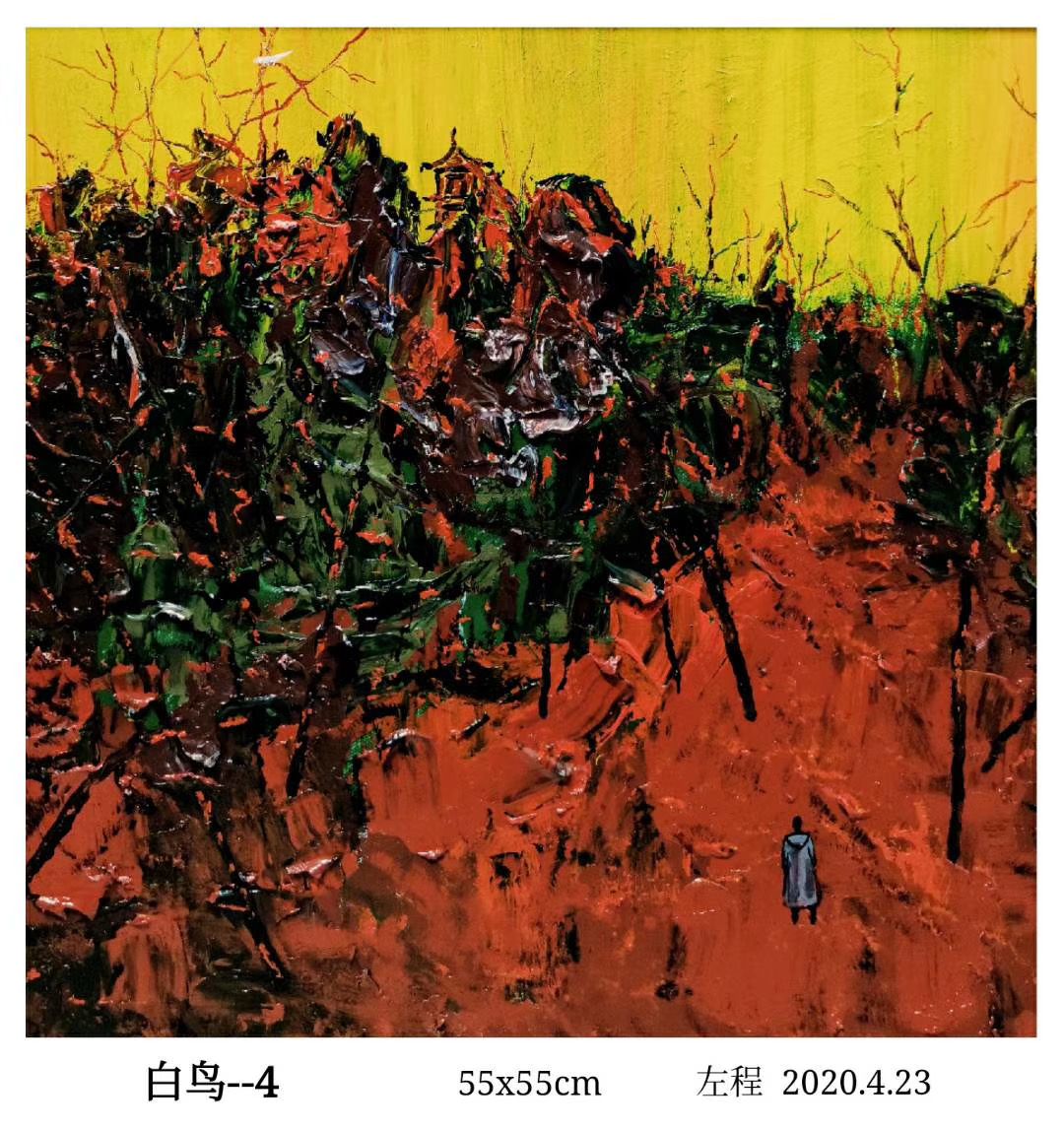
ZUO: Therefore, this period also has given us many possibilities. Just like when you’re sick, after being sick, people may experience a lot of things in the depths of their soul that were not touched during the original healthy period. In this disastrous situation, we could only try our best to face life with this positive attitude.
左程:所以关于这个时期,包括咱们说的后疫情文化,后疫情人类等等,其实这一时期也给予了我们很多可能性。就像人生病一样,生病了以后人可能会体会到很多原先健康时期没有触及到的一些灵魂深处的东西。这种灾难性的情境下,我们只能尽量以这种积极的态度去面对生活。
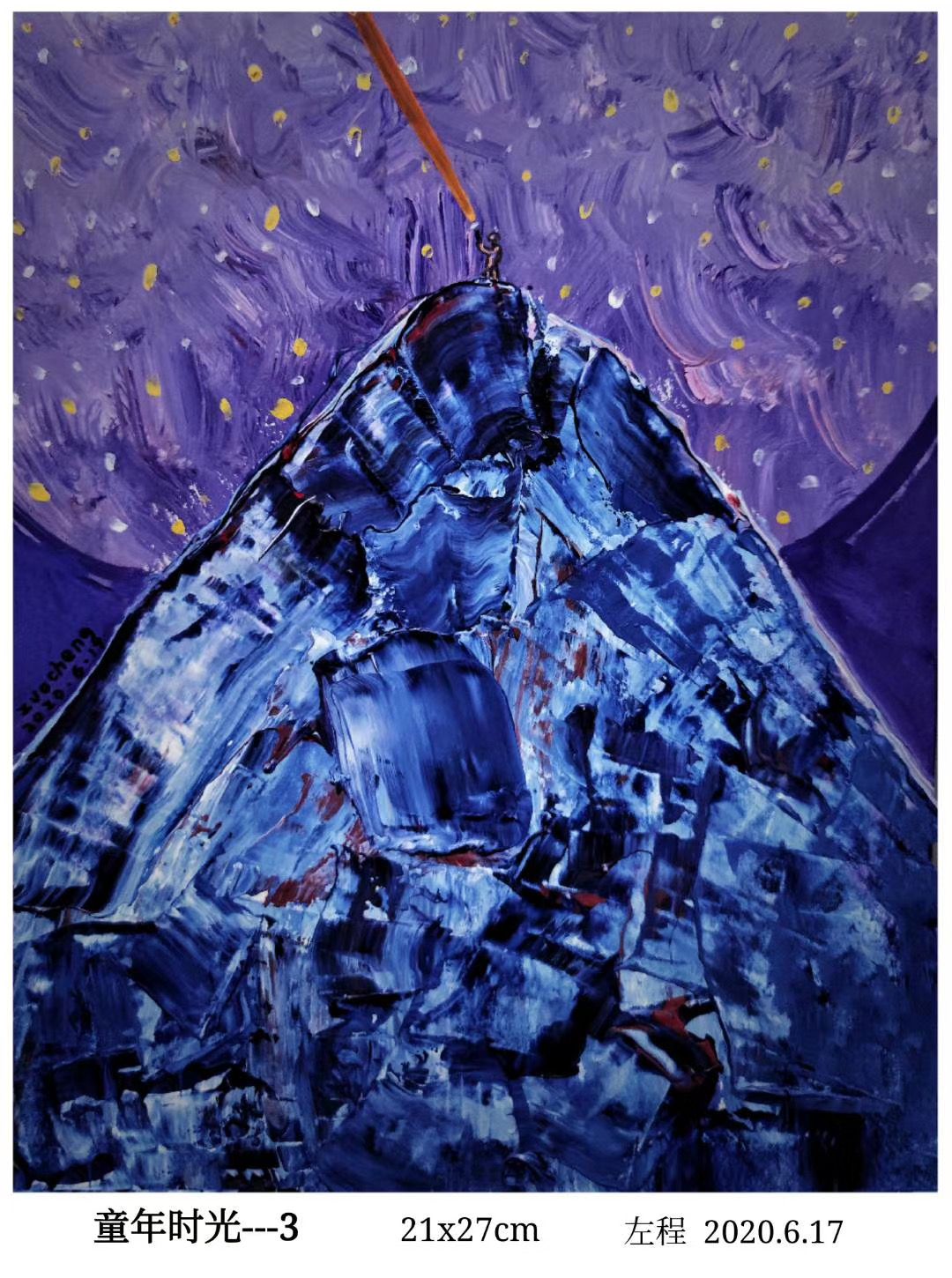
As far as I am concerned, the pandemic has brought me both sadness and warmth. The emotion is like half sea and half flame, which is also same as our real lives. It would never be dull, there could always be ups and downs, tossing and turnings. In fact, this kind of life is relatively rich, too smooth or too bland would be too simple.
就我个人来说,疫情带给我的有悲伤也有温情,所以说在这种情感下,就像一半是海水,一半是火焰。它会让你觉得真正的人生就是这样,永远不会一直平淡,会有跌宕起伏啊,有辗转反侧,其实这种人生才是相对丰富的,太平淡了,太顺利了,反而会单一一些。
Jackie: Yes, I think half is seawater and half is flame. This description is particularly good. It seems that you are standing on the central axis, and you can see from both sides, but the situation and scene in front of you may change. For example, the seawater may wet your trousers, or the heat of the flame may blow your face. But in fact, in many cases, it is more about where we are willing to look. You may see the sea or see the fire, which is deeply depending on your visual angle. Various situations would arise, but only your mind would be the absolutely influential factor. Although we would also be changed by the situation’s many factors, our status would always depend on our subjective will.
高嘉齐:是的,我觉得一半是海水,一半是火焰,这个形容特别好。好像你站在中轴线上,两边都是可以眺望的,但是眼前的情况和情景可能会改变,比如说海水可能会沾湿你的裤脚,或者火焰的热气可能会扑面而来。但其实很多时候更在于我们愿意看向哪边,你可能看到海或者看到火,这取决于你的视觉角度。各种情况都会出现,但只有你自己才能成为绝对的影响因素。虽然我们也会被情形所改变,其中也会被很多要素影响,但这永远取决于我们的主观意志。
ZUO: Therefore, in some particularly peaceful times, the works of artists and writers would be relatively plain. However, facing this kind of big challenge, both artistic and literary works would be very powerful, because turbulence would also bring opportunities and bring new changes. Hence, as an artist, I think I should not be afraid of facing any challenges, even of natural or man-made disasters. If an artist has the sense of the social responsibility, he would truly reflect himself and society with his works, instead of commercializing art completely with a certain purpose. Completely commercial works could never directly hit people with power, and the shock brought by truly great art would never be replaced and imitated.
左程:所以往往在特别和平的年代里,艺术家作家的作品相对平淡一些。然而在这种大的变革下,不管是艺术作品还是文学作品的都会更有力量,因为动荡也会带来机遇,带来新的变革。所以对于艺术家来说,我觉得应该不怕面临任何挑战,甚至于天灾人祸。如果一个艺术家他具有一定的使命感,他会以作品真实的反映自己,反映社会,而不是把艺术完全商业化,或者抱有某种目的。完全商业化的作品是无法直击人心的,真正伟大的艺术带来的震撼是无法替代和被模仿的。
Jackie: Exactly, this involves the issue of the status quo of the artist, because if some artists do not commercialize their works, they might have no way of sustaining their own lives, so many artists would have a part-time or a side job. This reminds me of a problem, that is, artists have largely deviated from the field of career, and appear more as an identity, that is, taking art as their lifelong goal and pursuit. From the moment you recognize yourself as an artist, many of your perspectives would be changed. You would also stand in the position of an artist to observe your life and the surrounding world in an all-round way, and integrate art into your whole life. I also find that very interesting.
高嘉齐:对,这就涉及到艺术家现状的问题,因为很多艺术家如果不把作品商业化,是完全没有办法维持生活的,所以很多艺术家会有一个兼职或者是副业。这就让我联想到一个问题,就是艺术家很大程度上已经偏离出了职业的范畴,更多以一种身份出现,就是以艺术为自己的终身的一个目标或者追求。从自我认知为一个艺术家那一刻起,你很多的视角都会被改变,也会站在一个艺术家的位置去全方位地观察自己的生活和周边的世界,将艺术融入进生活的骨血,这是我觉得很有意思的。
ZUO: So I said an artist should come to be a person firstly, and real artists wouldn’t worry about their identity. If you could still use your artistic potential as you are in a normal living and working environment, this is admirable, due to you have to live a life firstly, I think these two were not contradicted with each other.
左程:所以我说艺术家,他首先是一个人,所以我说真正的艺术家,你不要纠结于身份,比如非要让别人给我贴个标签,我是个艺术家,如果在普通的生活工作环境下,你依旧能把你的艺术潜能发挥出来,这才是令人佩服的,因为你首先要活下去吧,我觉得这个不矛盾。
Jackie: Right, an artist seems to be in a lifelong pursuit. I think this is great. He has a perspective and a positioning, a lifelong aspiration, which is beyond the scope of many careers, and it’s closely related to life.
高嘉齐:对,艺术家好像是一种终身的诉求,我觉得这样很棒,他是一个视角一个定位,一个终生的诉求,超乎于很多职业的范畴,是与人生就是紧紧联系在一起的。
As when we were talking before, our identities were not particularly clear. It may be due to our teacher-student relationship or the chat environment. Our discussions were always mixed with many identities. However, today our conversation is completely about an interviewee and an interviewer, and we are developing around your identity as an artist. I think this becomes more interesting and gives me more in terms of the art of refining space.
This interview has benefited me a lot, thank you, teacher.
因为我们之前在谈话的时候,身份都不是特别的明确,可能碍于师生关系或者是聊天环境什么的,我们的讨论总是混杂着很多身份。但是今天我们是完全以一个被采访者和一个采访人的身份进行了对话,并且围绕着你作为艺术家的这个身份进行展开,我觉得这样就变得更有意思,可以在艺术方面给我以更多的提炼空间。
这次采访使我受益良多,谢谢老师。
Cheng Zuo is a great mentor and my helpful friend. He has not only brought me artistic enlightenment but also helped me to resolve the confusion and difficulties in my life. Everyone has a “mentor” in your life. He/she may be your friend, you parents or families, they could always clarify the difficulties for you and resolve your confusion.
This period has brought us a lot of negativity and anxiety. Therefore, maybe it’s time for you to have in-depth communication with your mentor based on art, in order to find yourself a bright light and dispel the haze.
左老师是我的良师益友,他不仅带给我以艺术的启迪,同时也会帮我排解人生的迷惑和困顿,每个人的生活中都会有一名“良师”,他可能是你的朋友,你的父母,他们总为你拨开云雾,答疑解惑。
这一时期为我们带来了不少的困惑与迷茫,不如以艺术为基点,和你的良师进行一次深度沟通,以寻一盏明灯,散一片阴霾。
Please share your experience of conversation on the comment section below! We’d like to hear from you!
请在下方评论区域分享你的感受和思考!我们乐意与你分享艺术之光!
Staff
Host: Jiaqi GAO
Contact Person: Jiaqi GAO
Planner: Jiaqi GAO
Text: Jiaqi GAO
Translator: Jiaqi GAO
Proofreading: Calum BAIRD, Rebecca TUTTHILL
